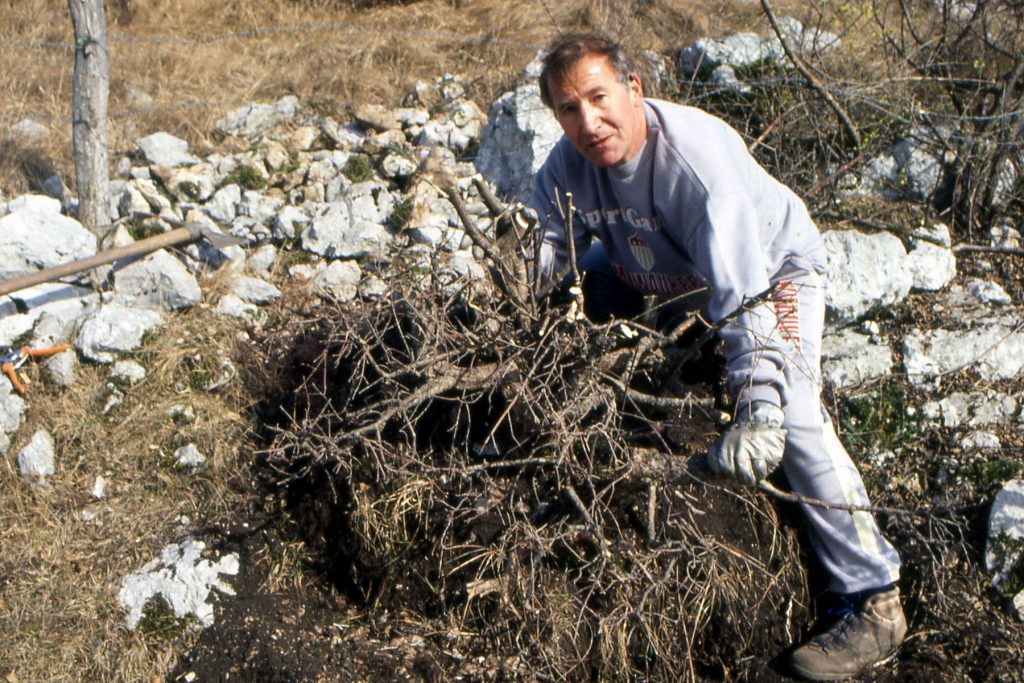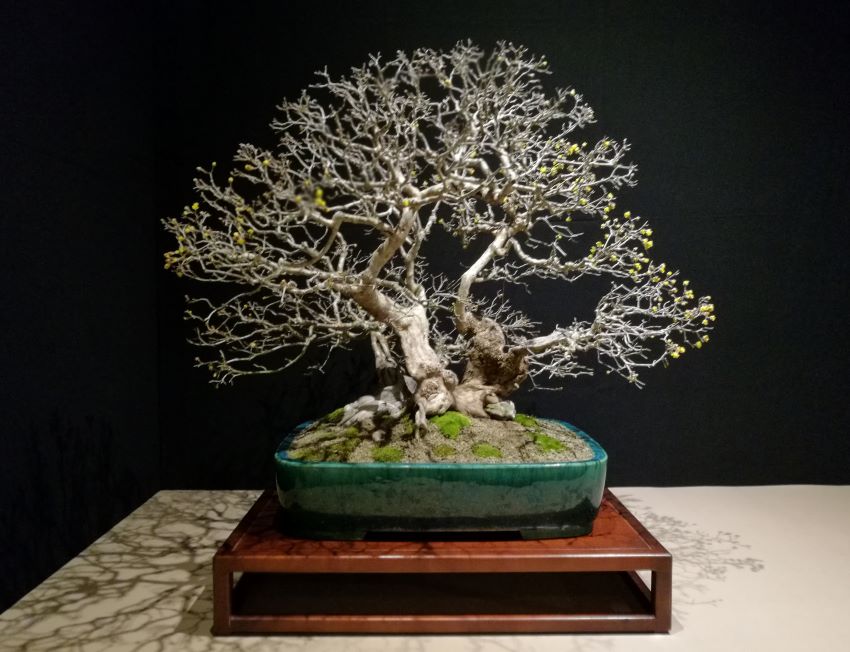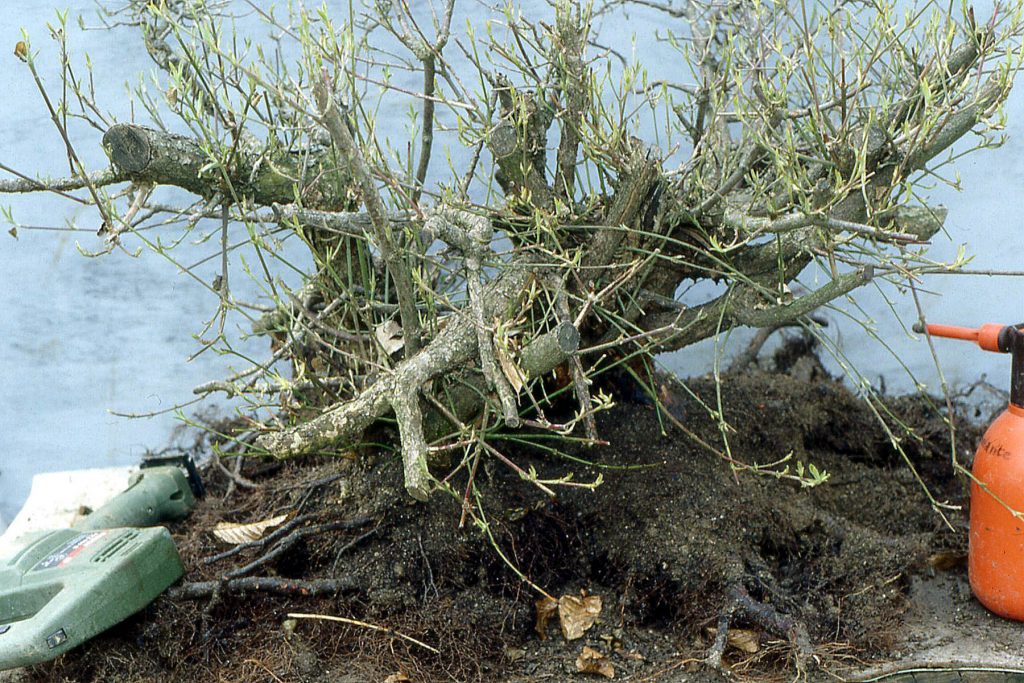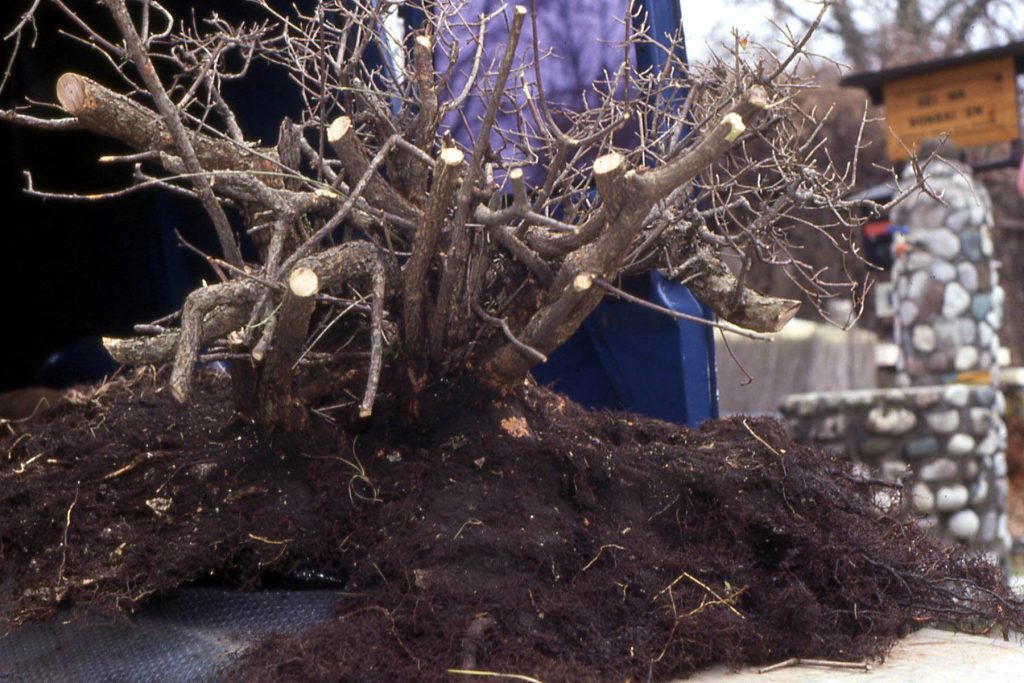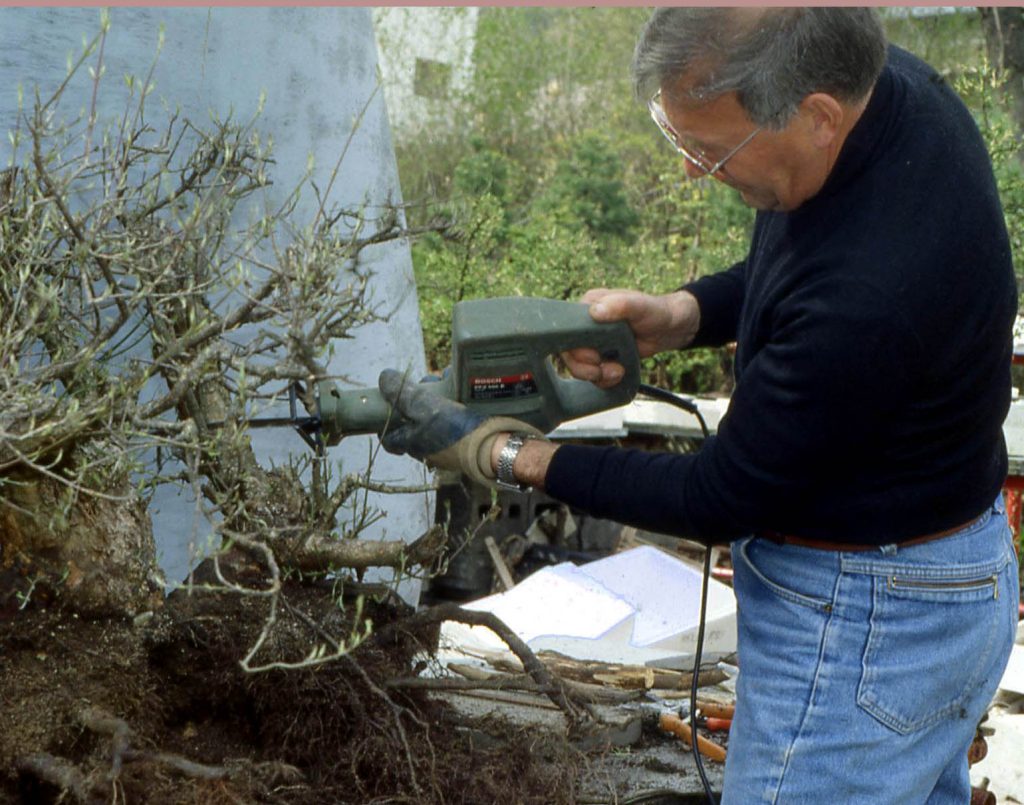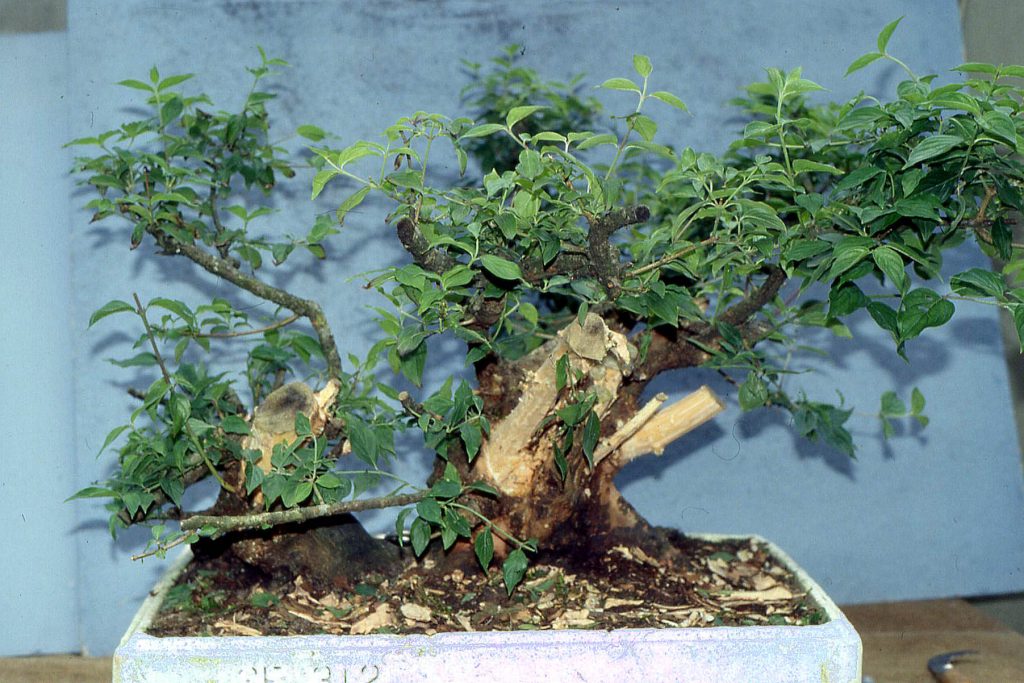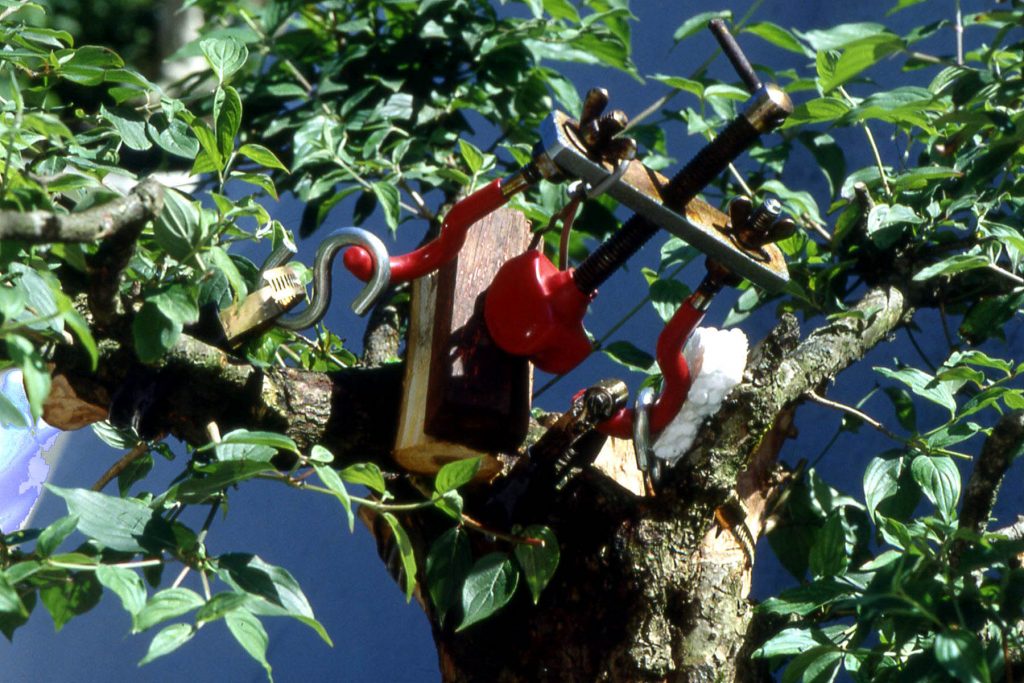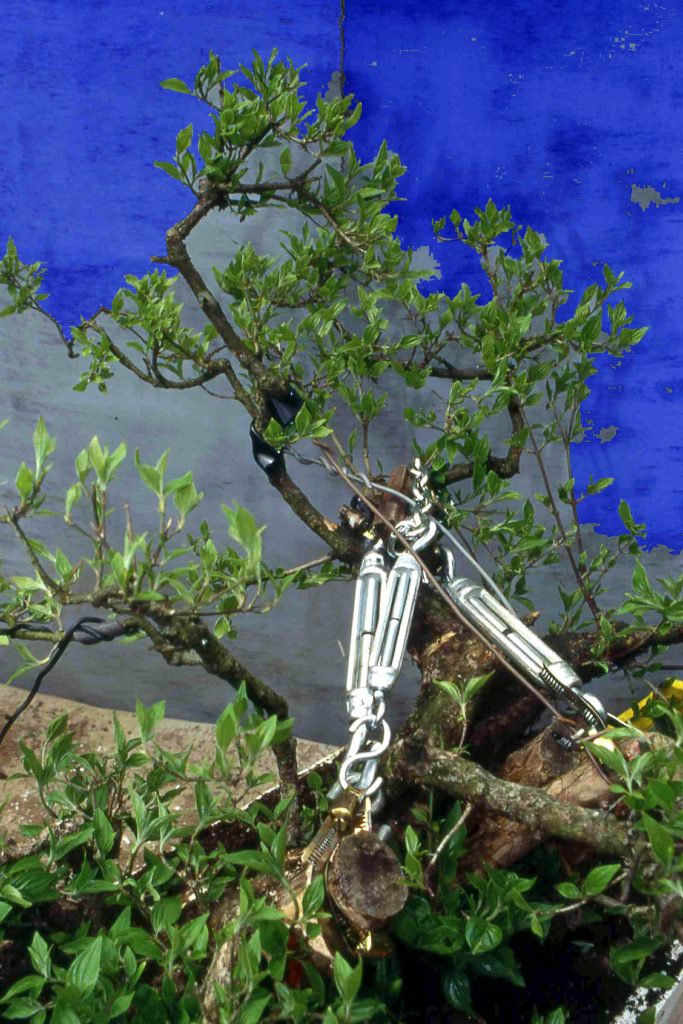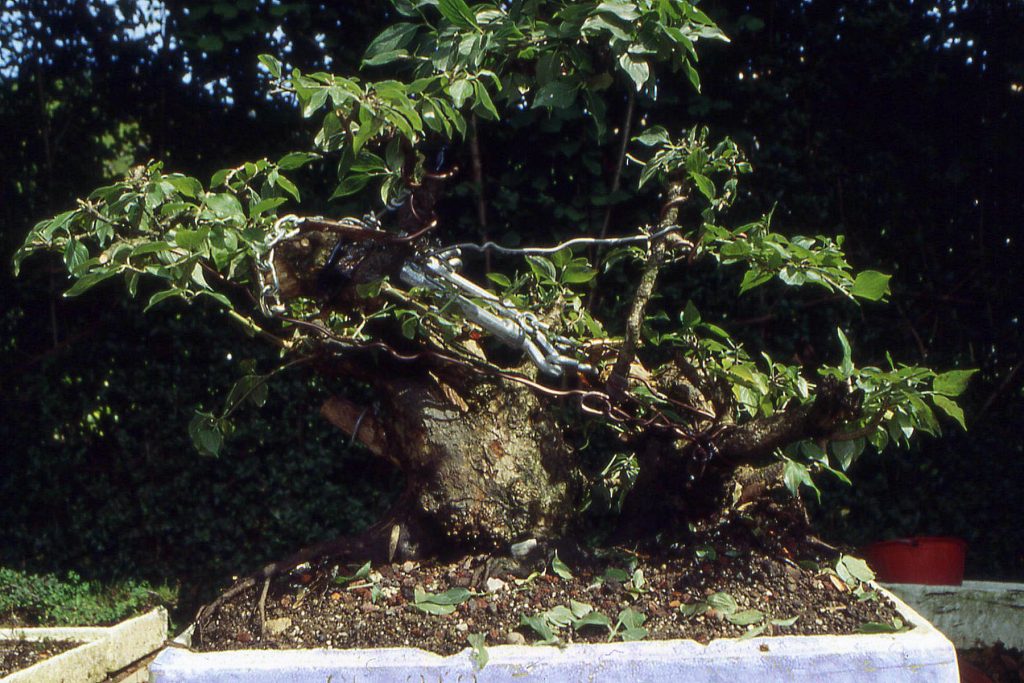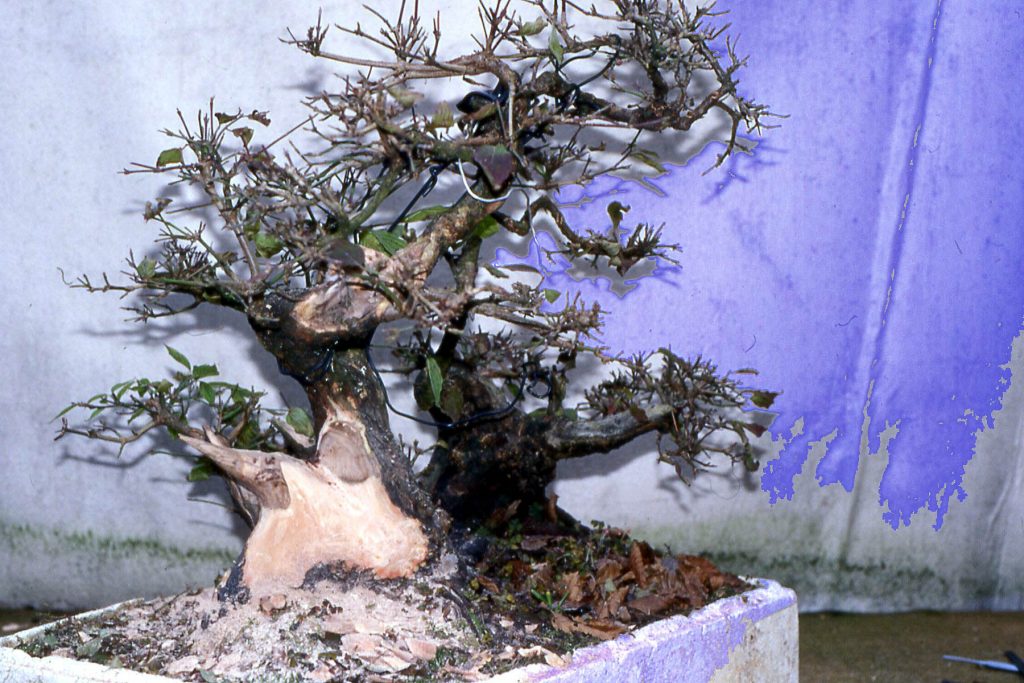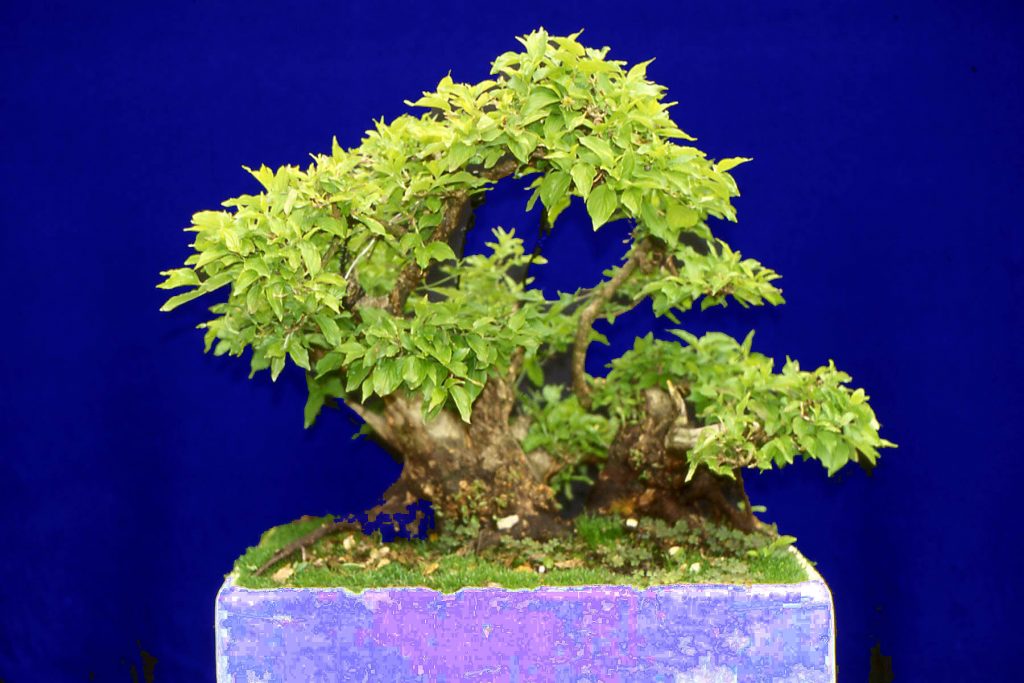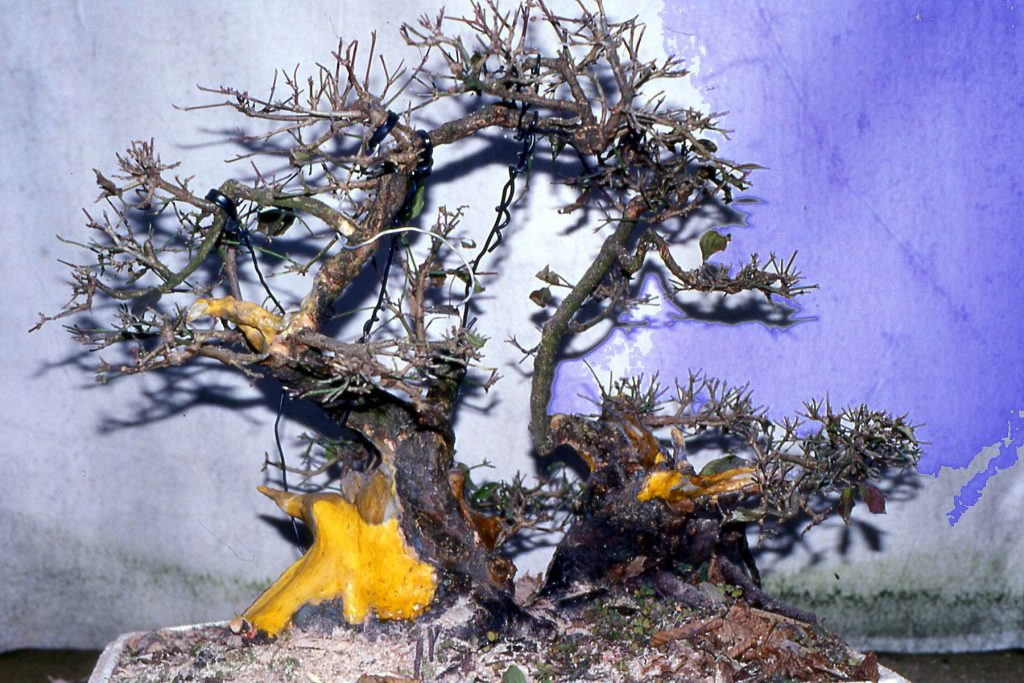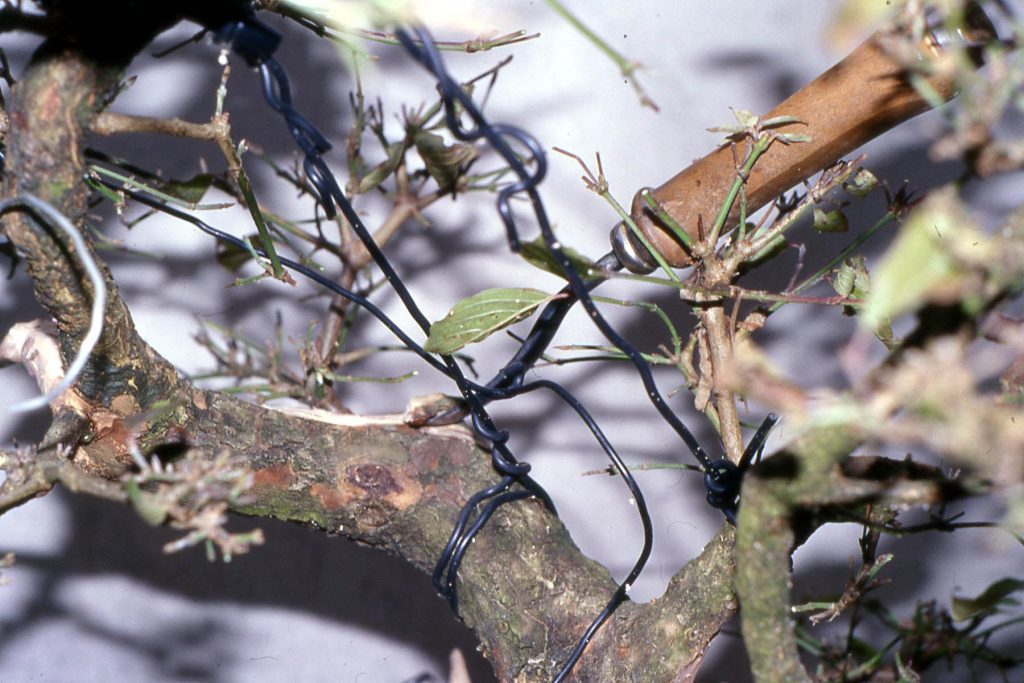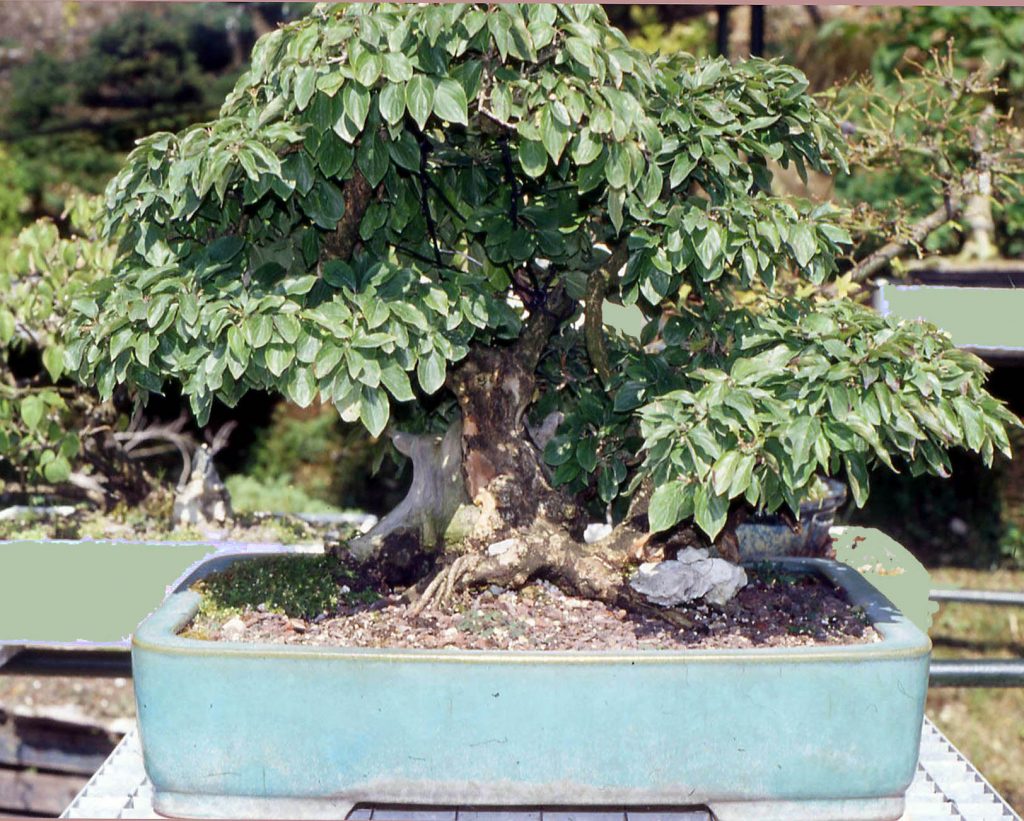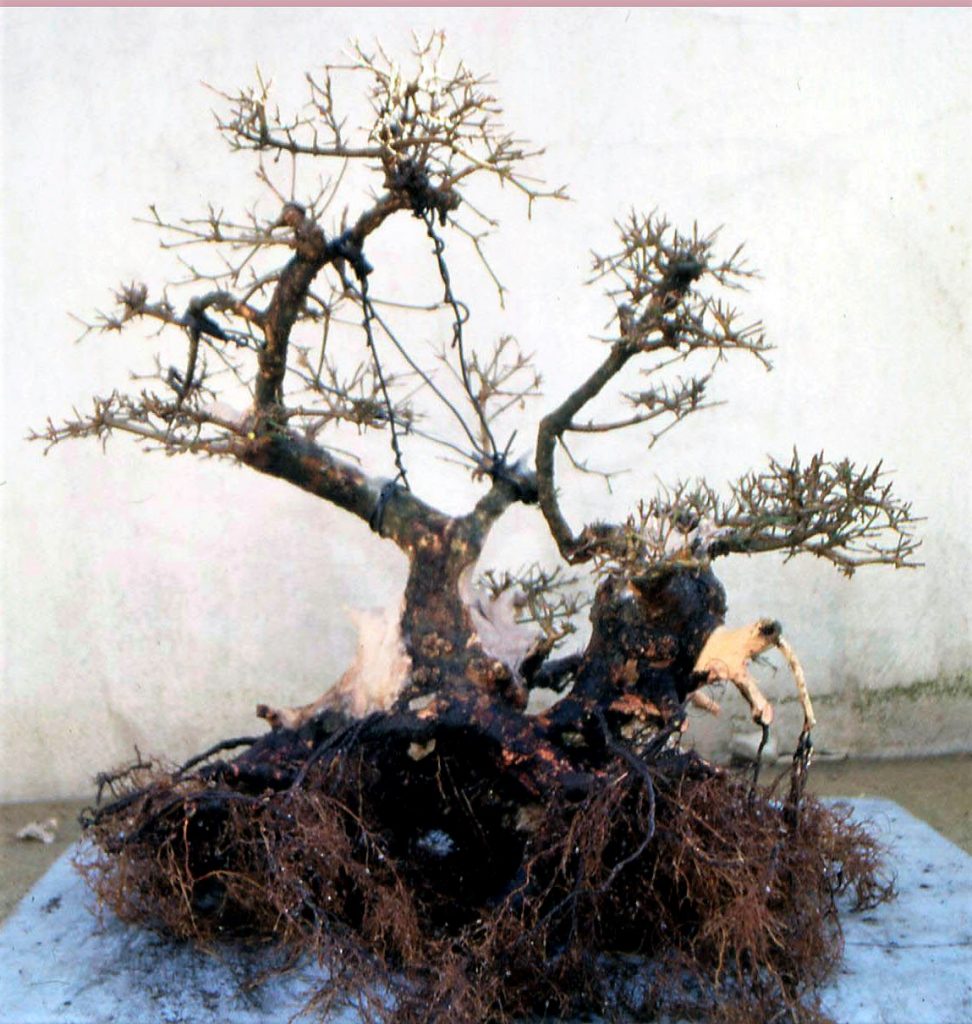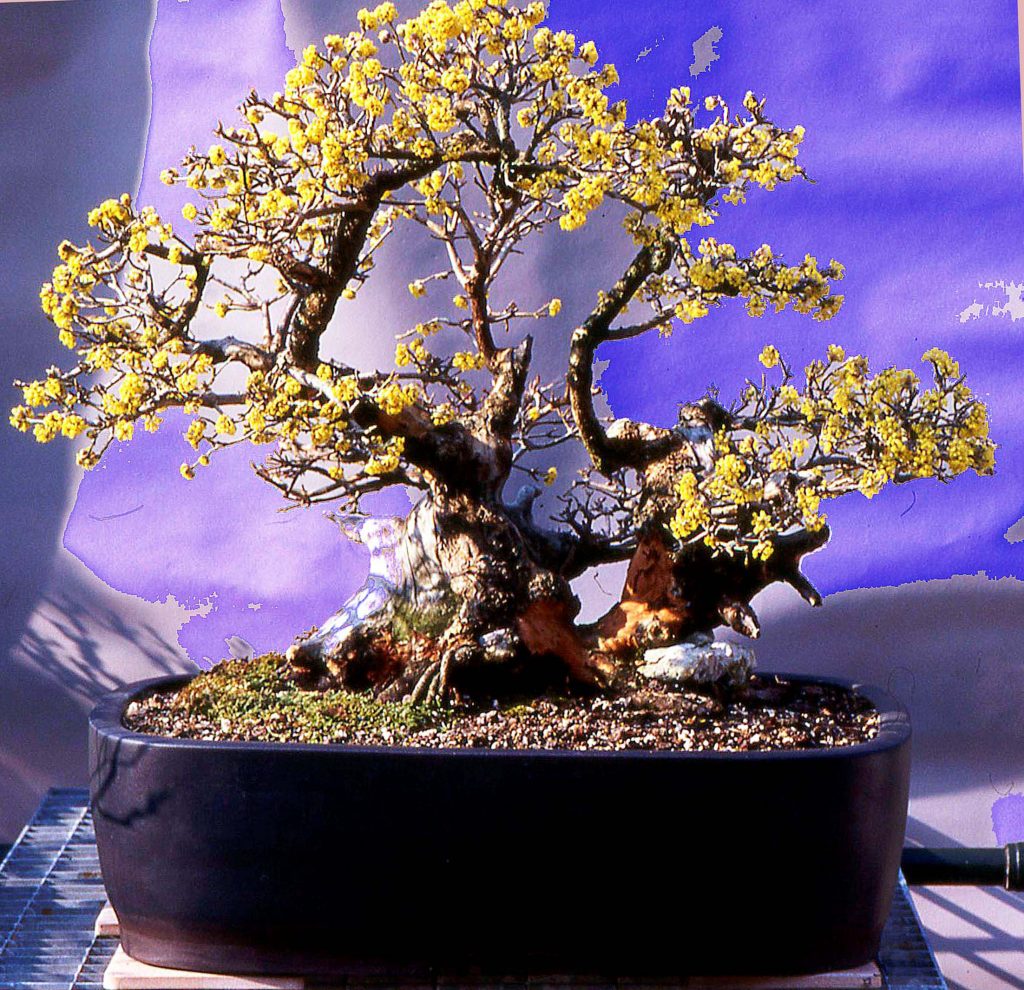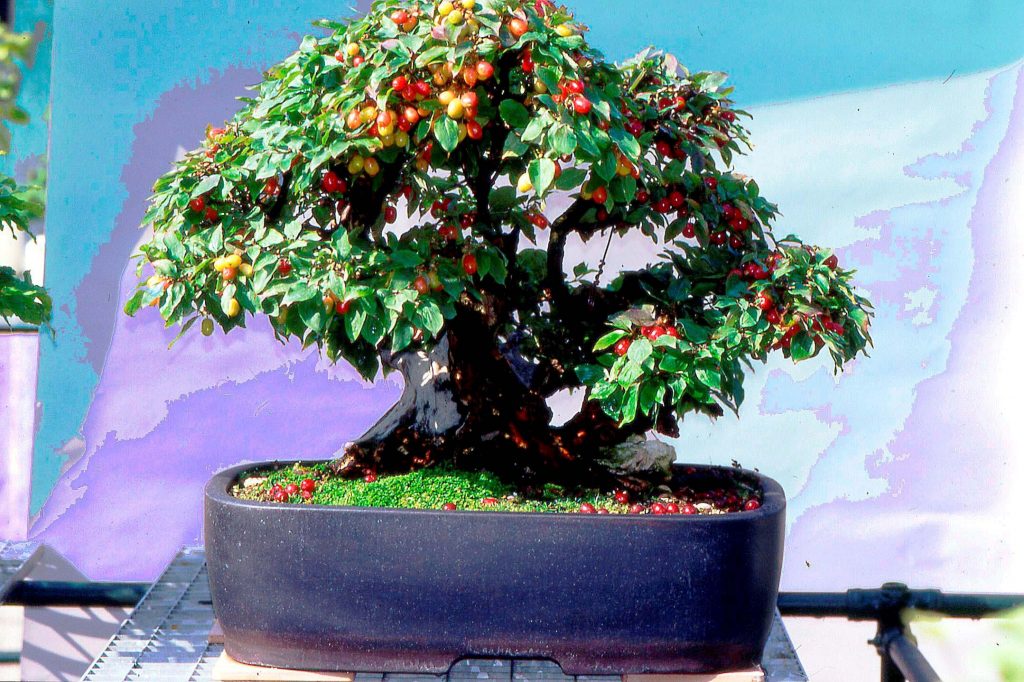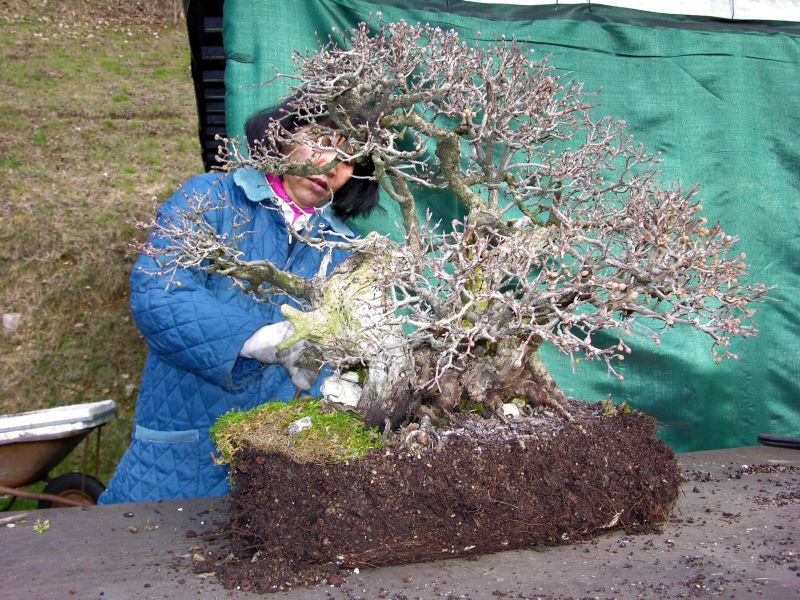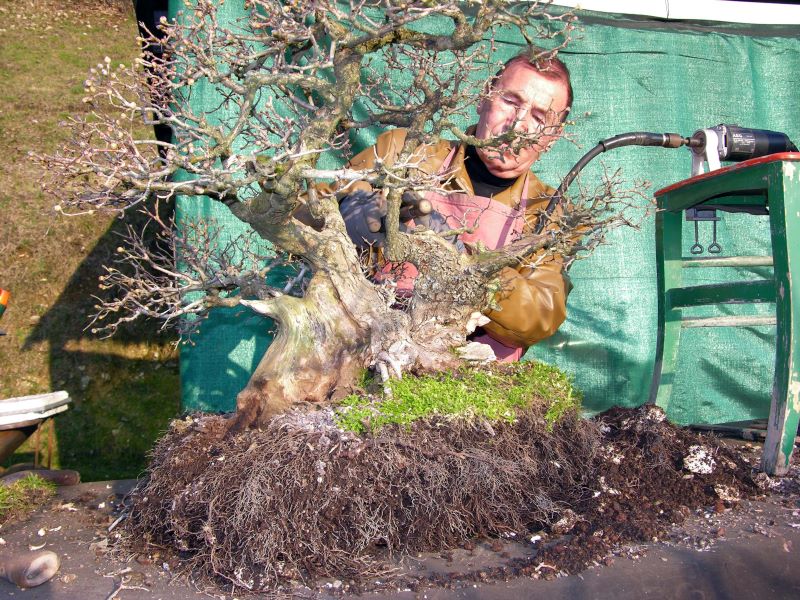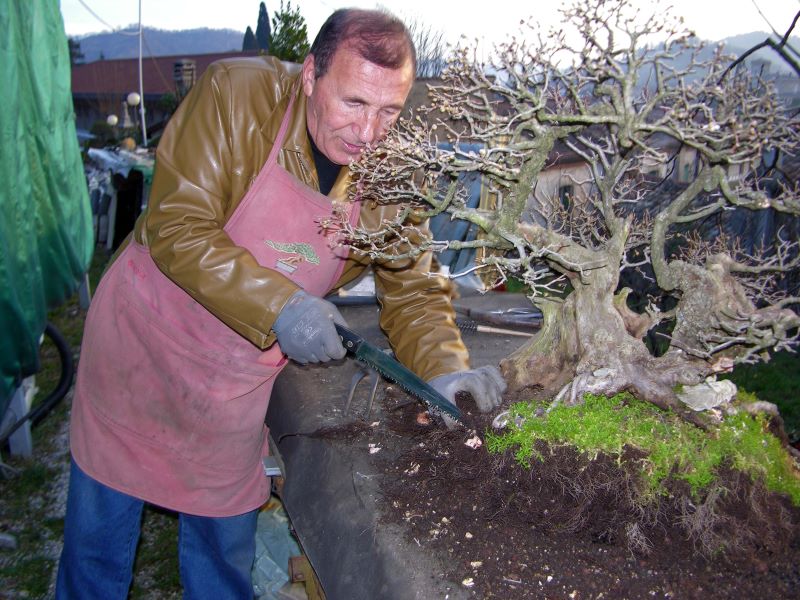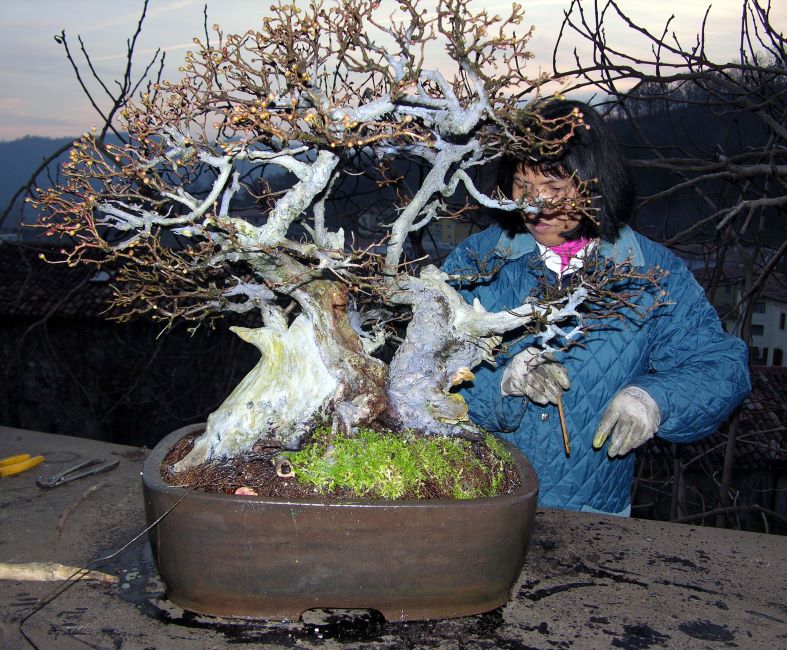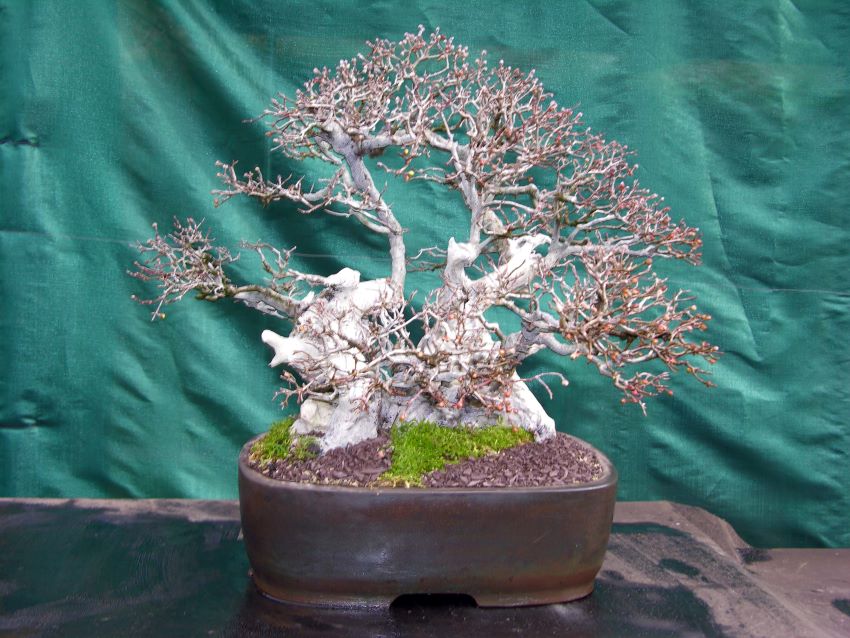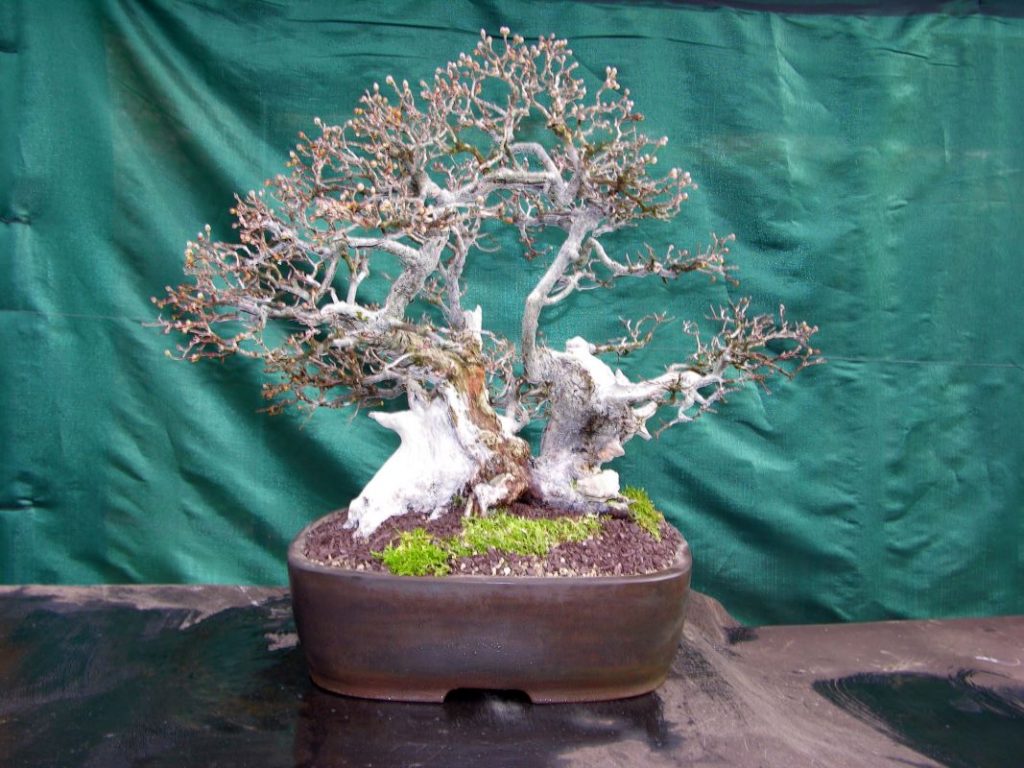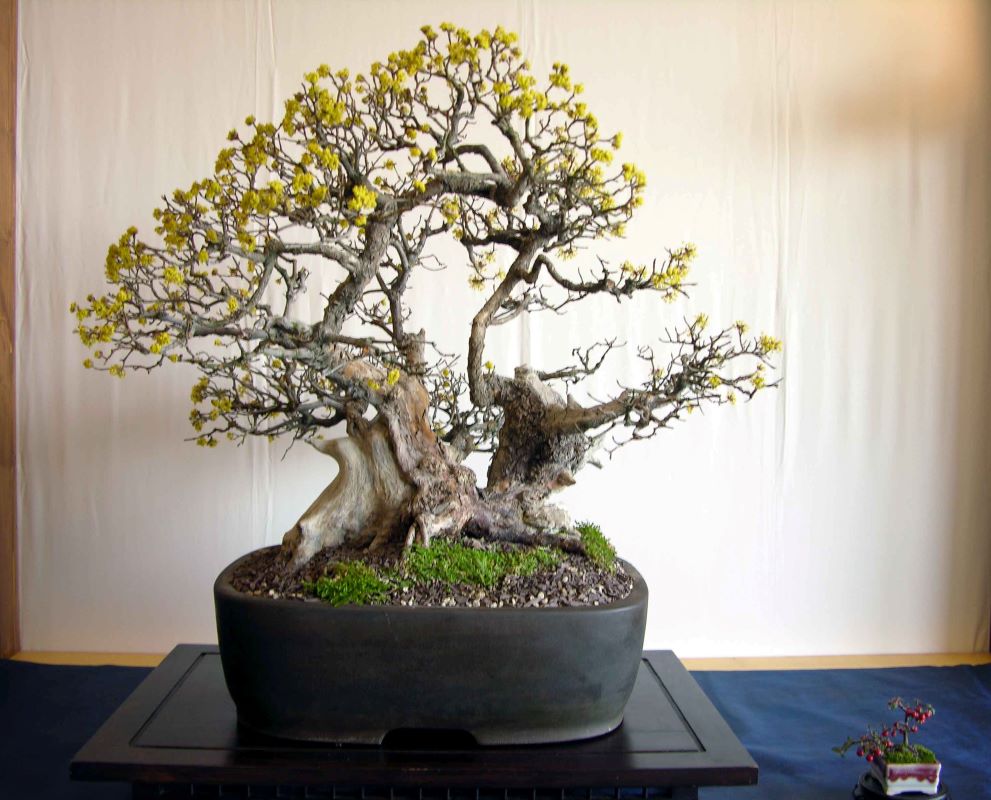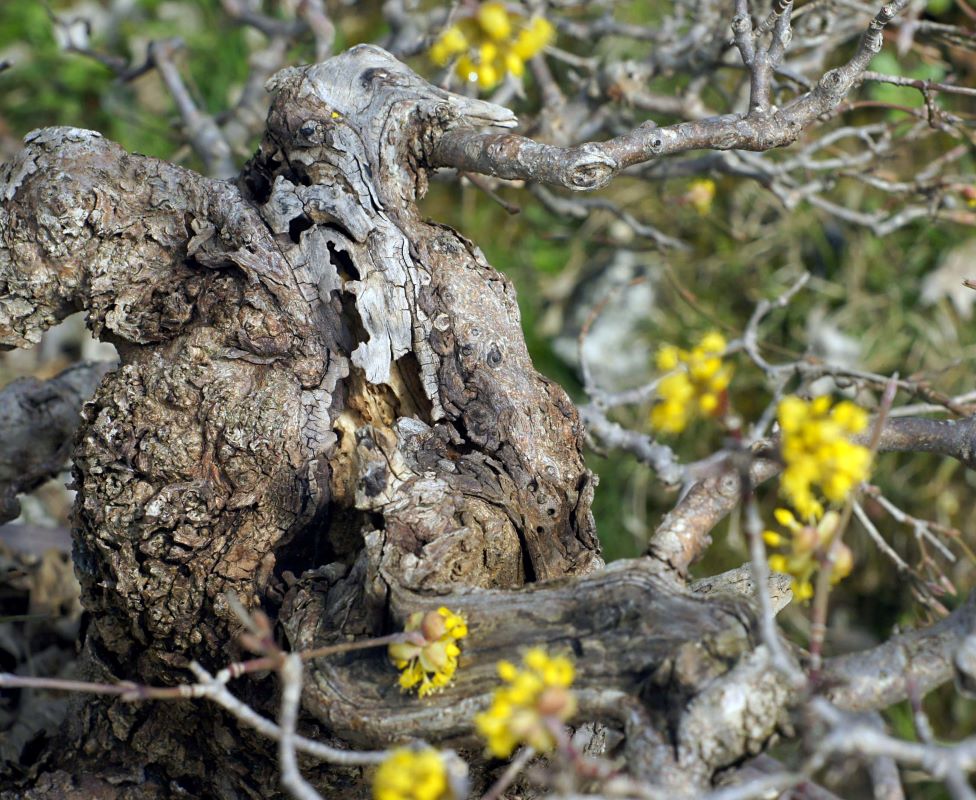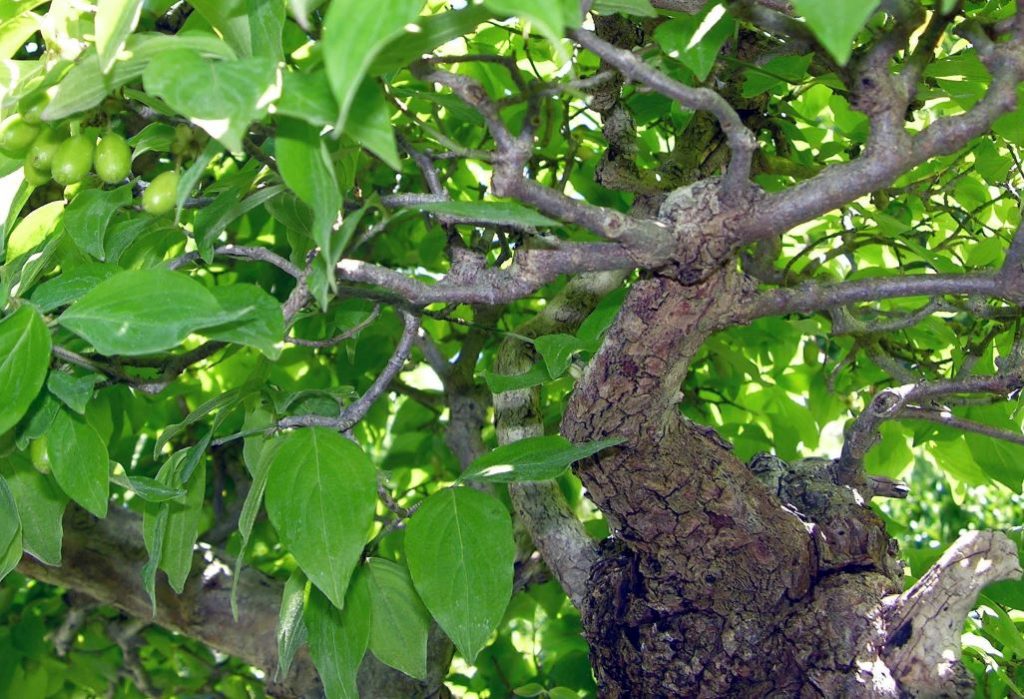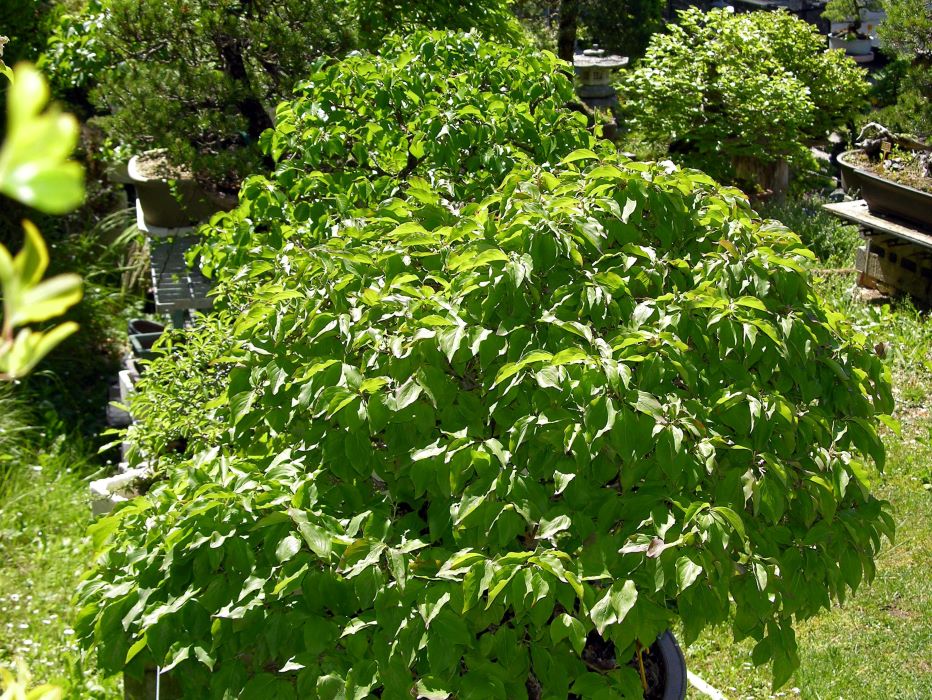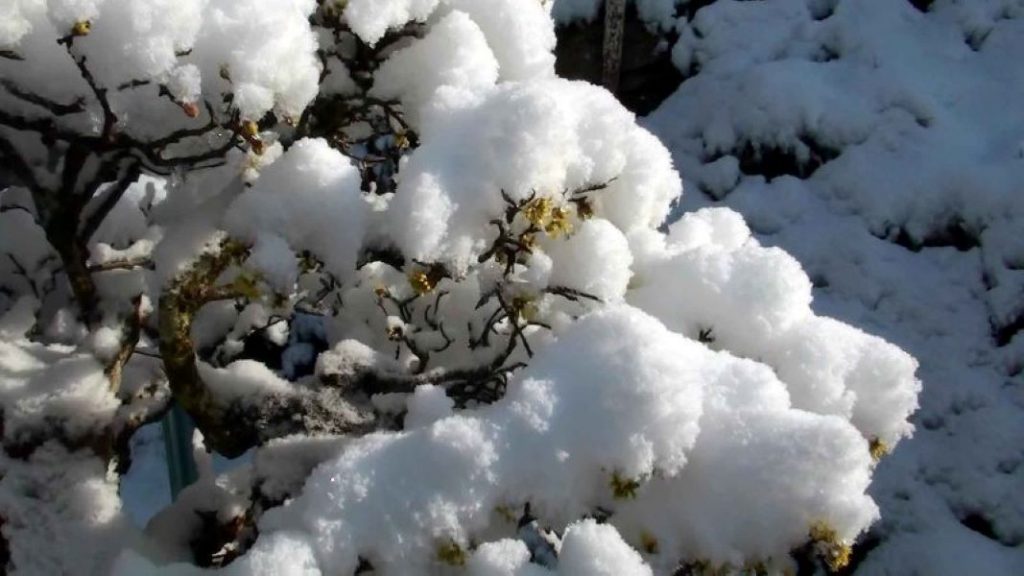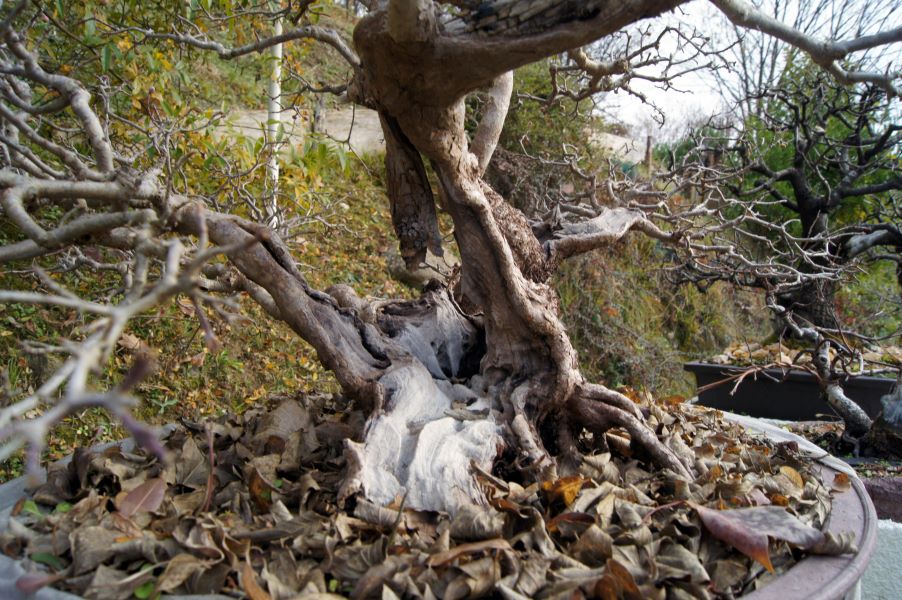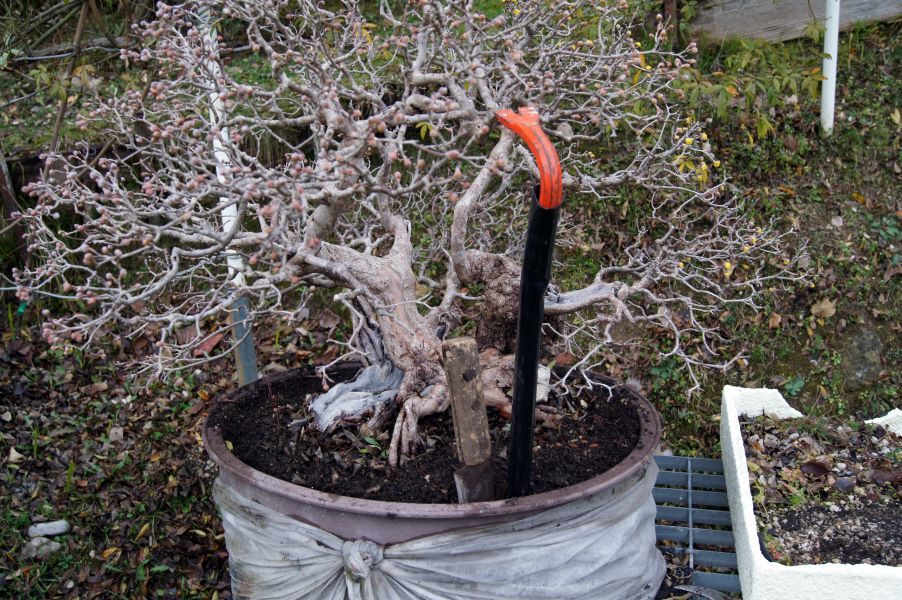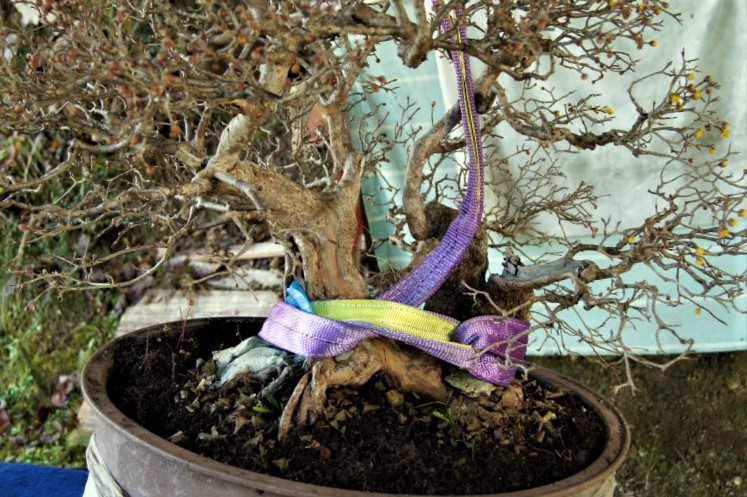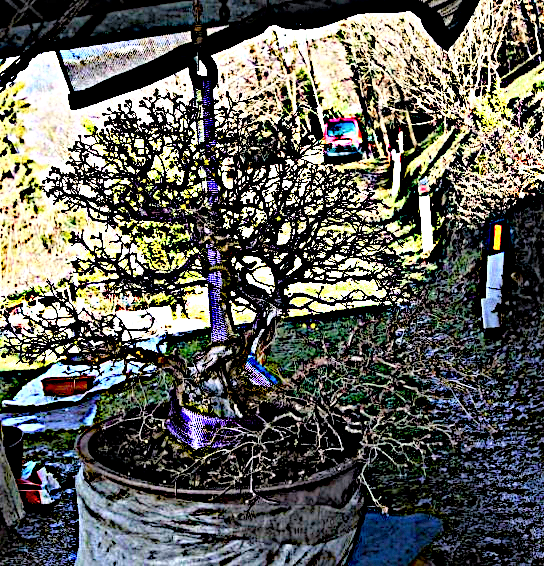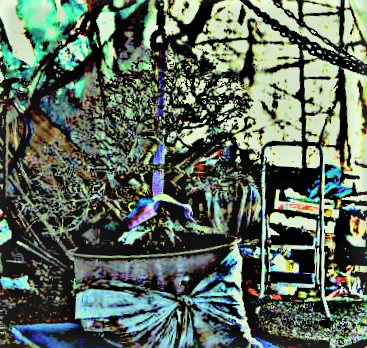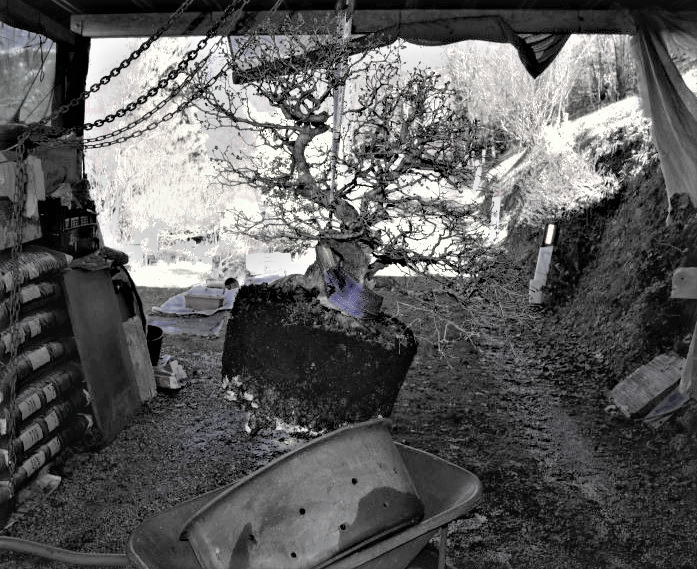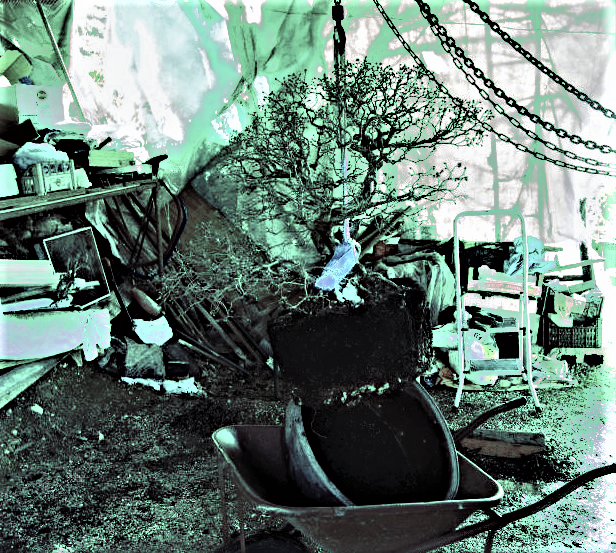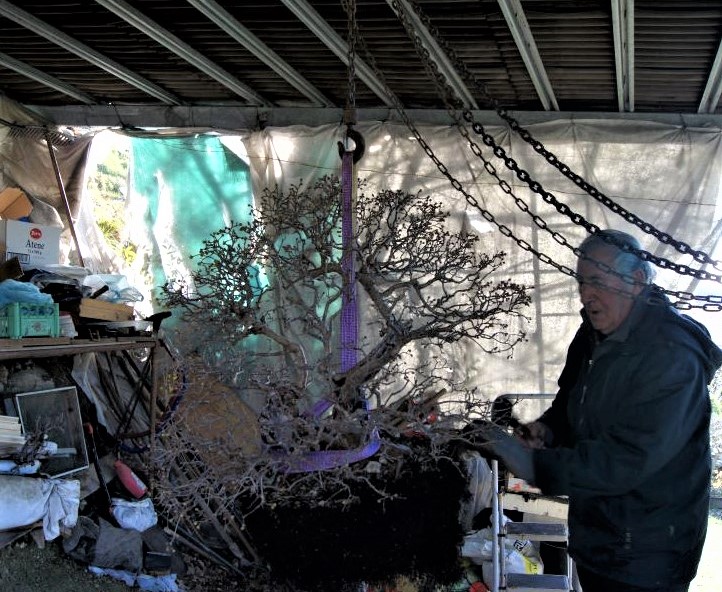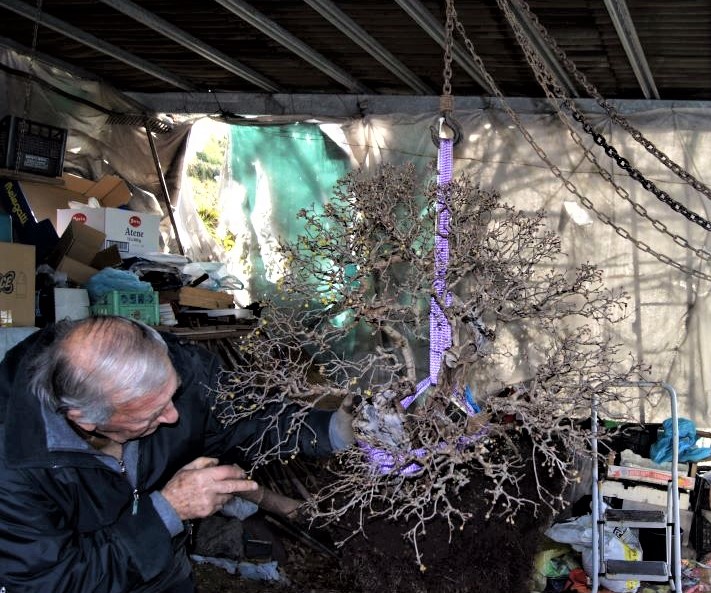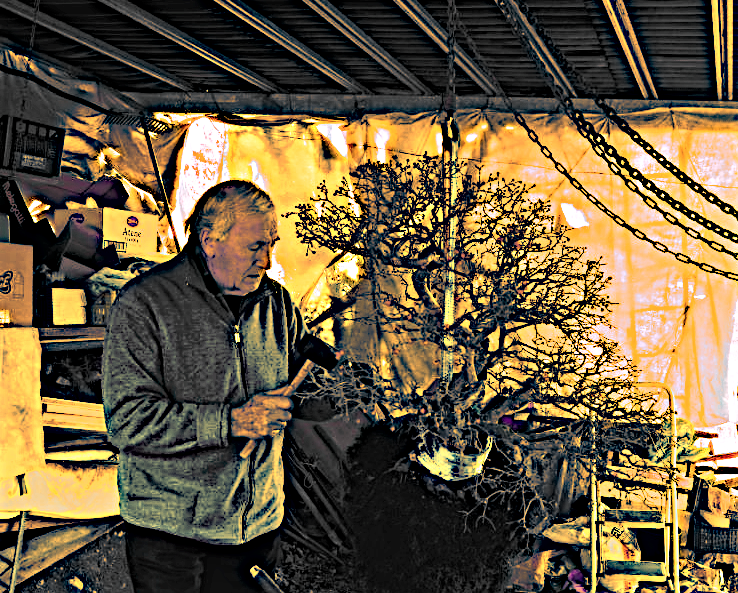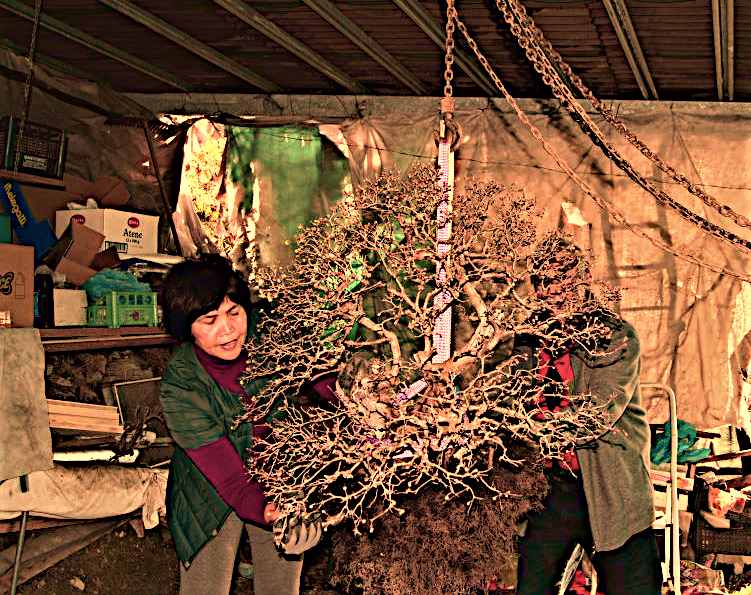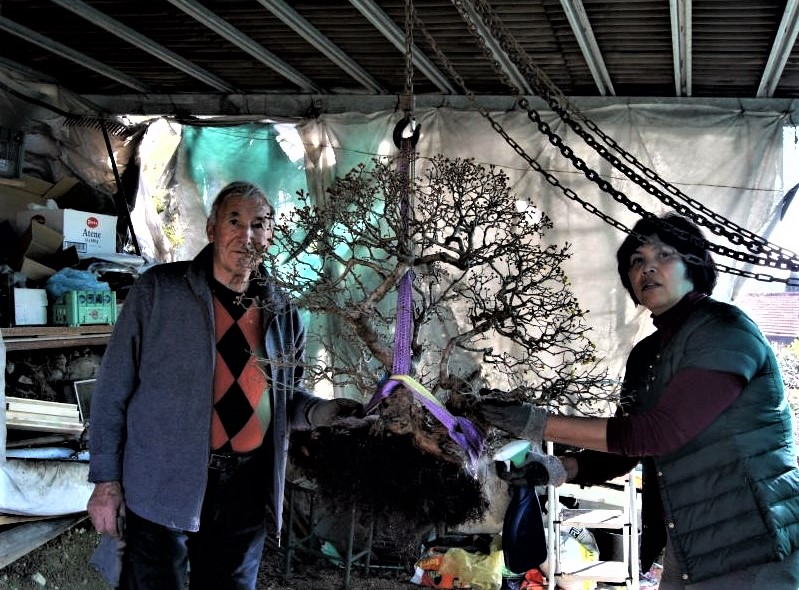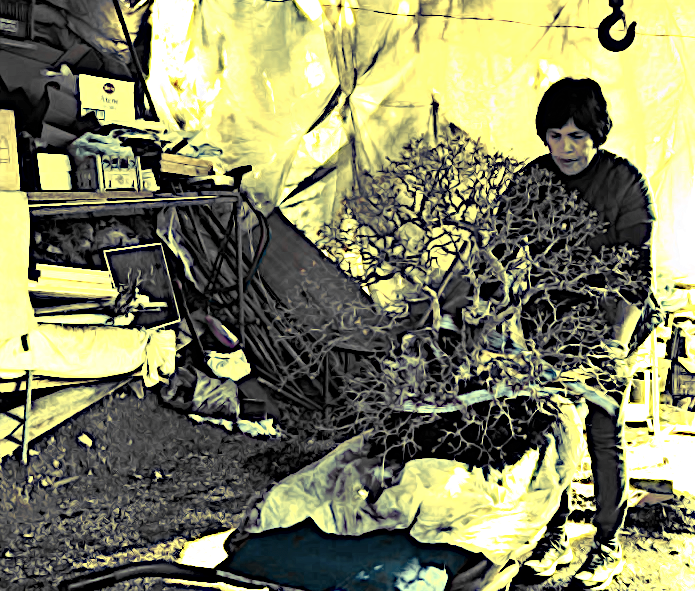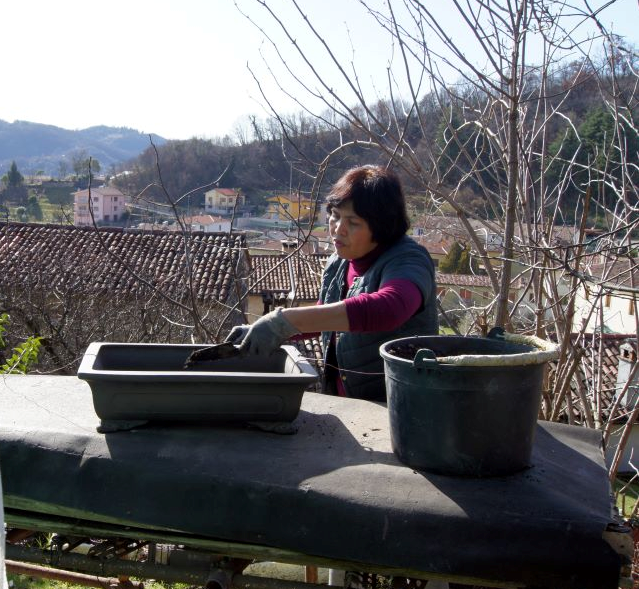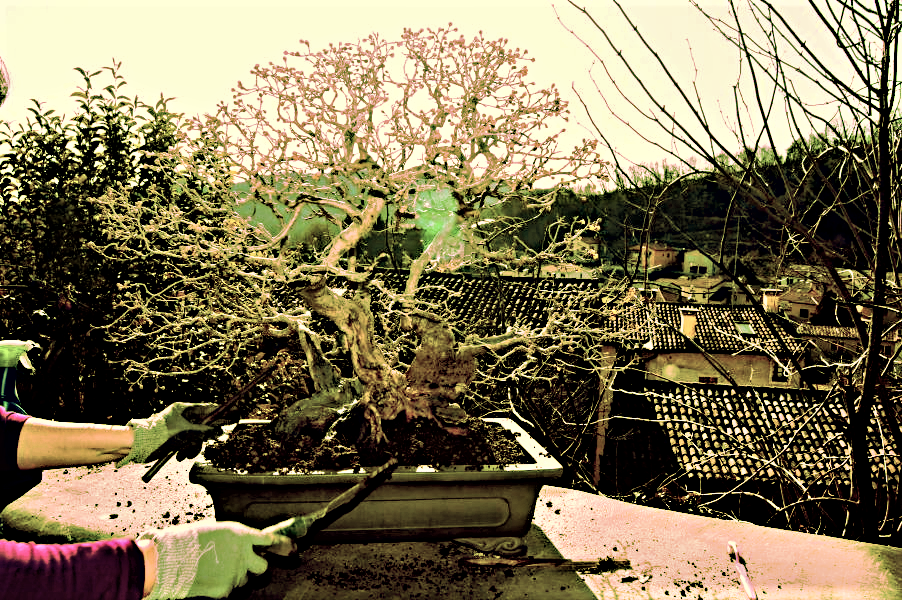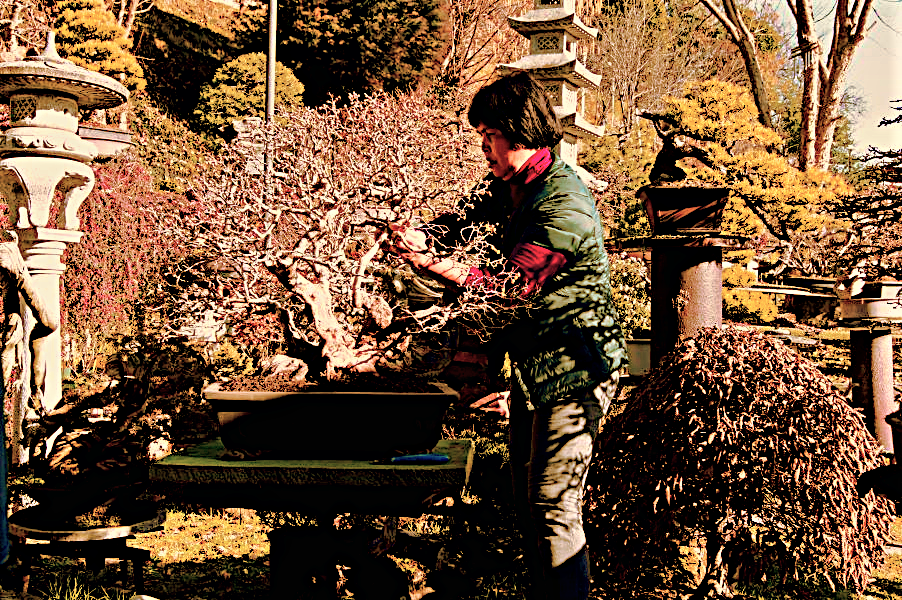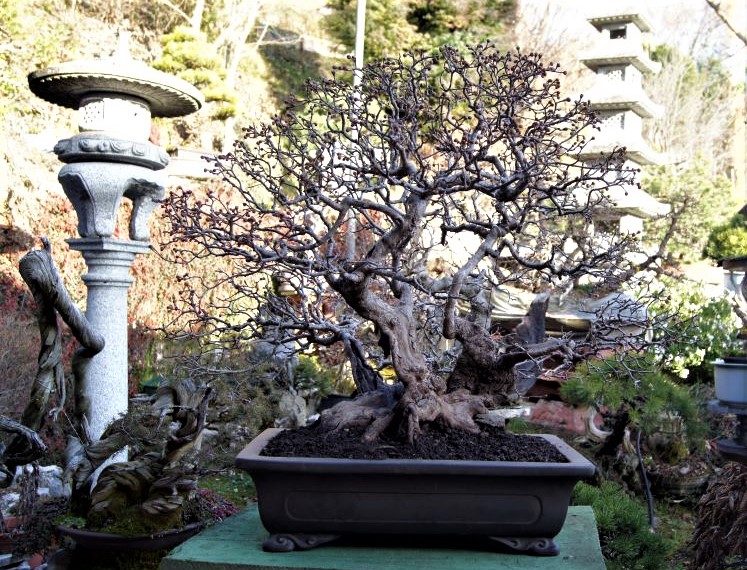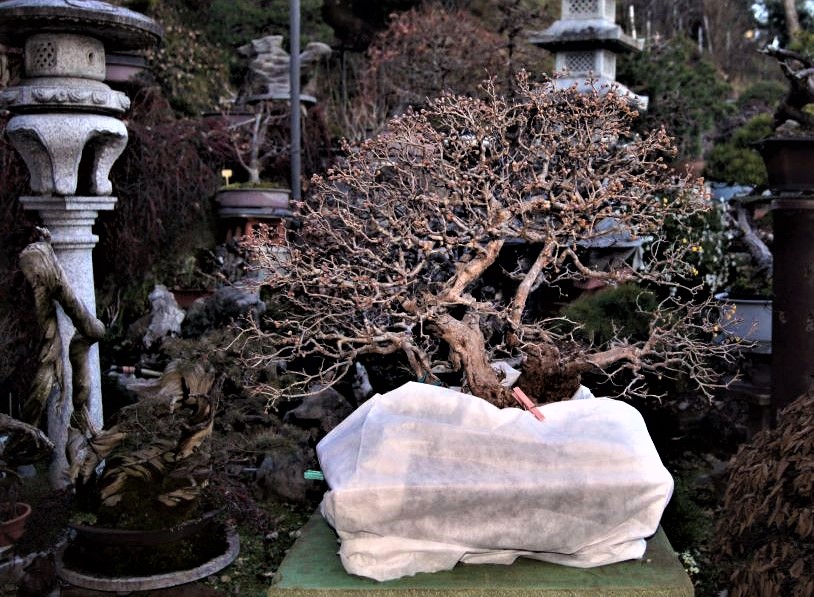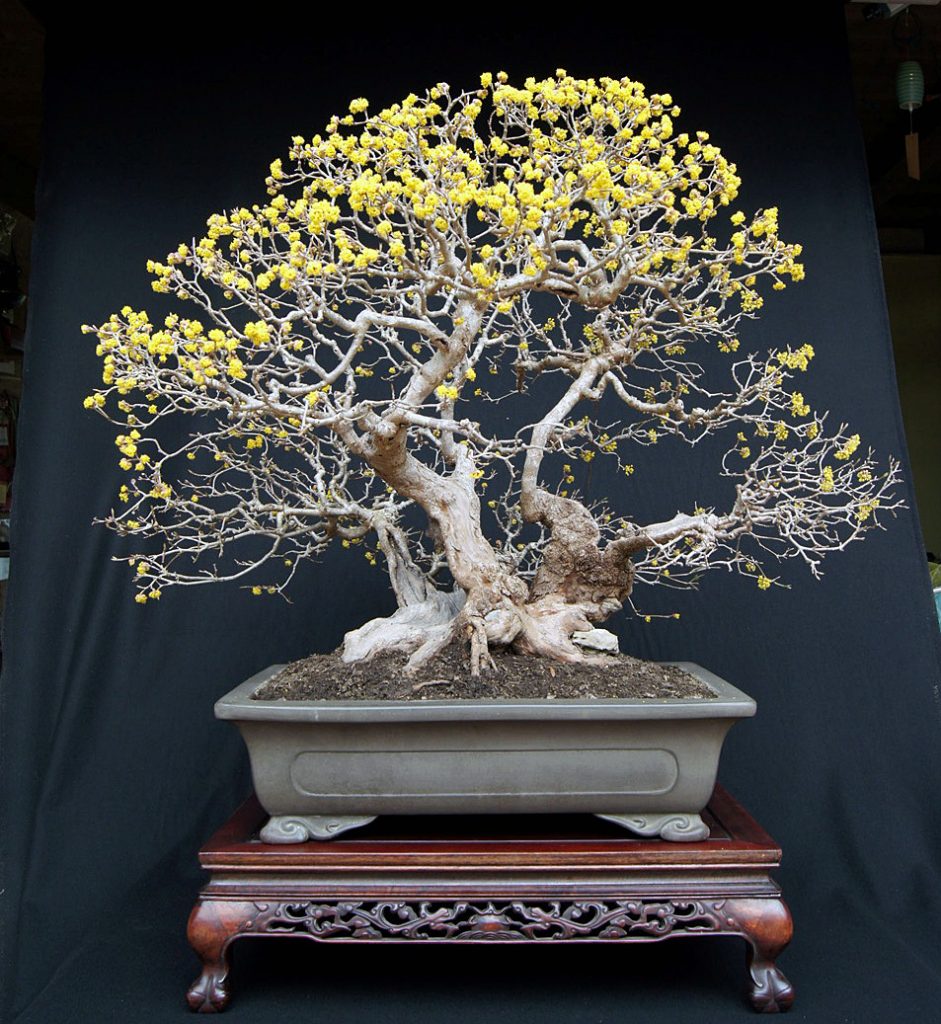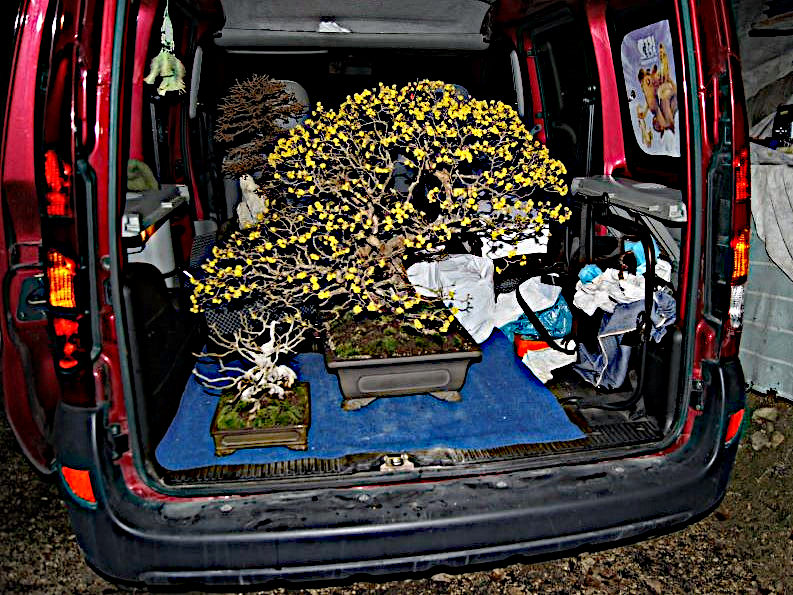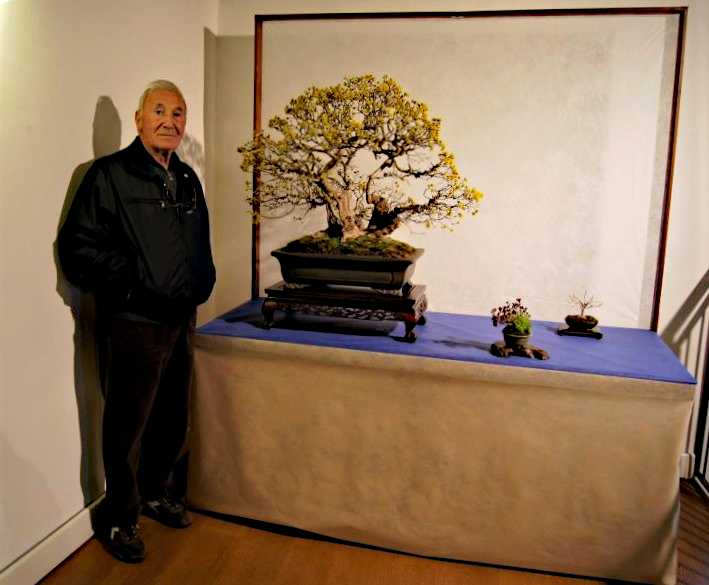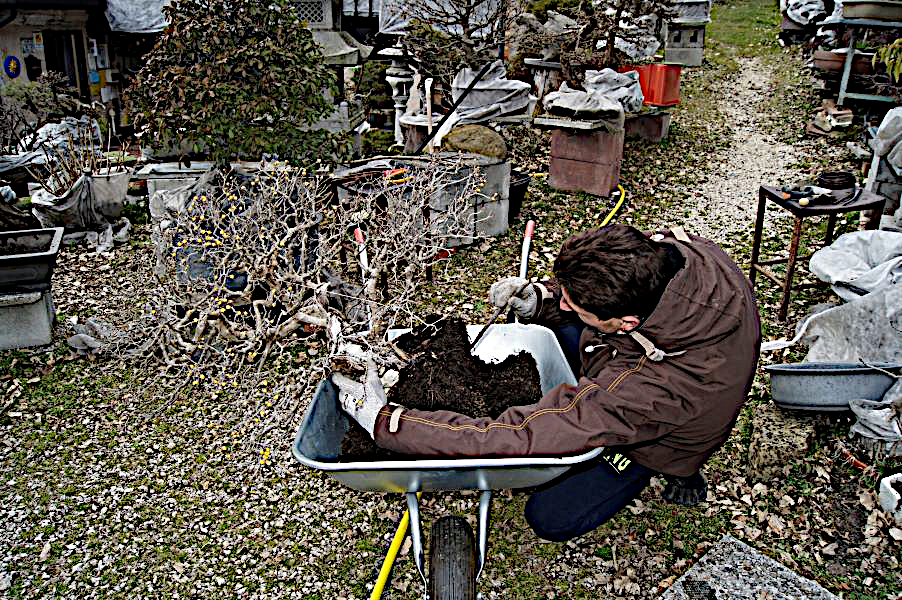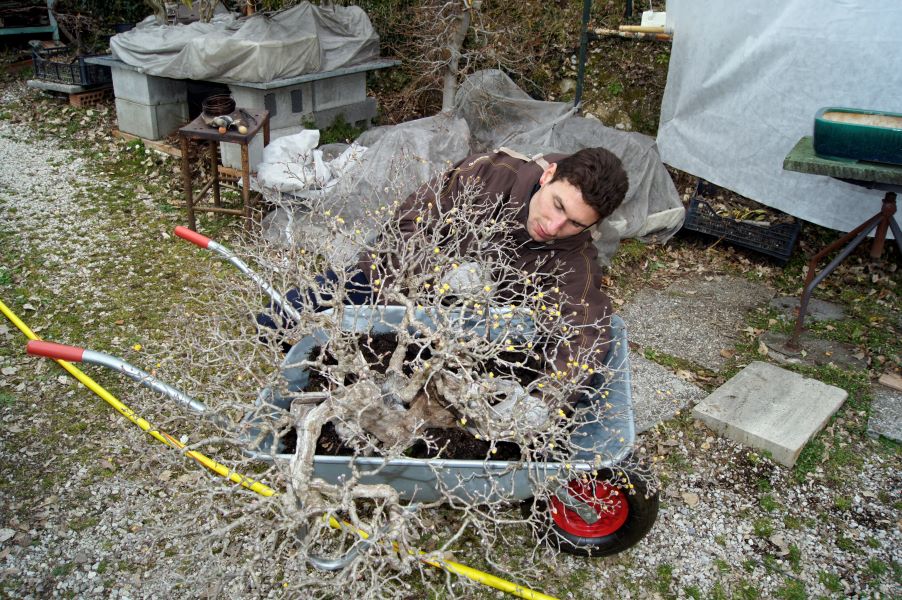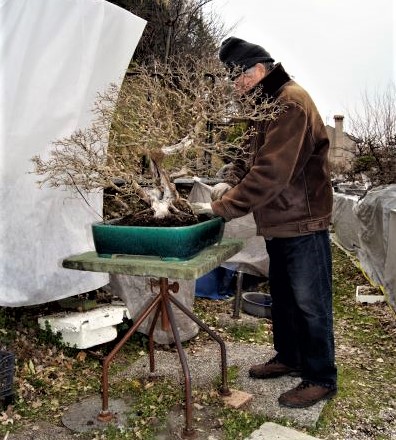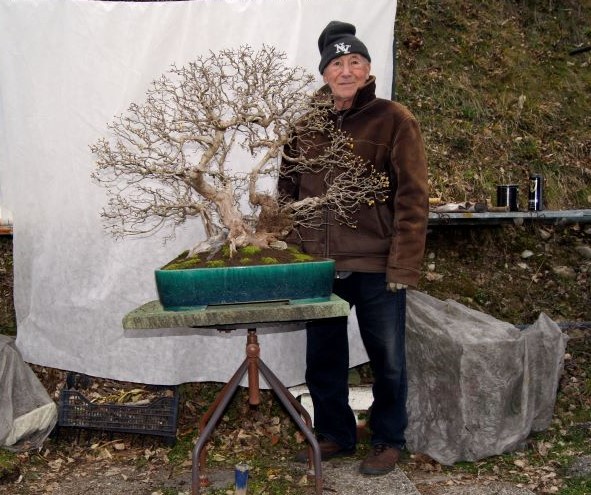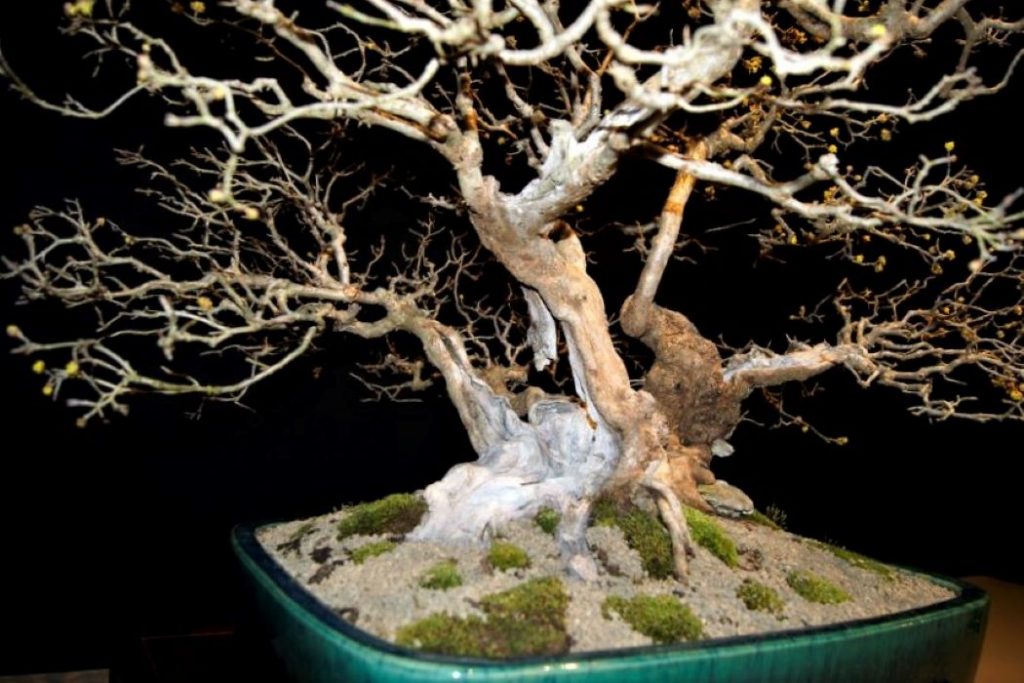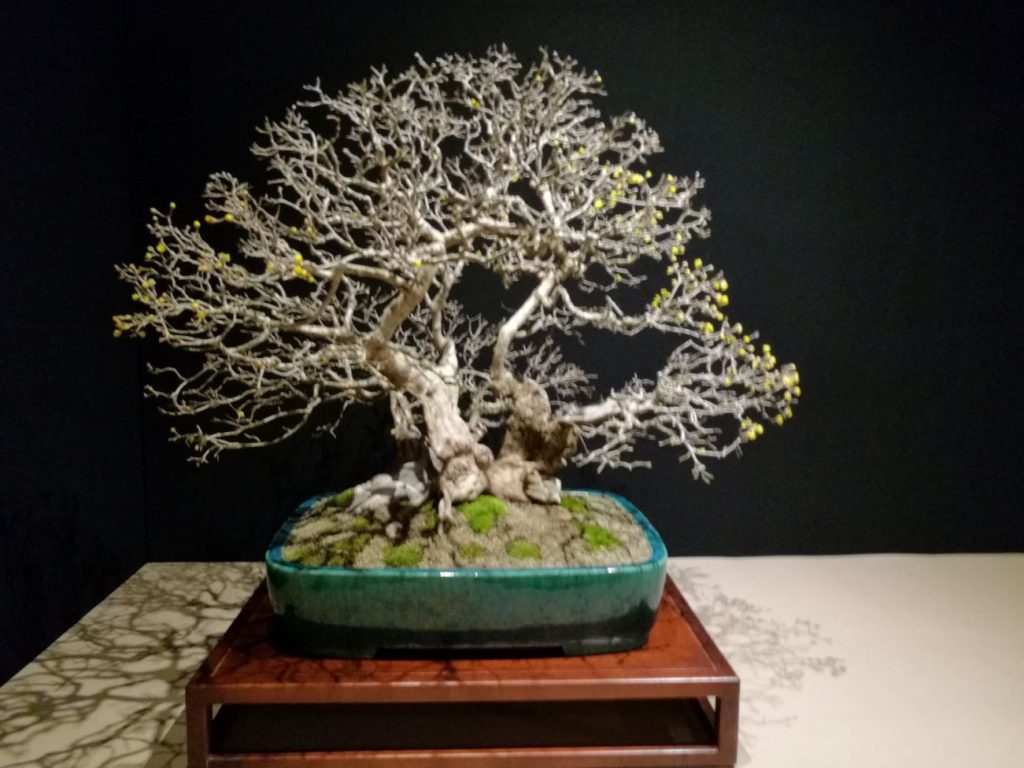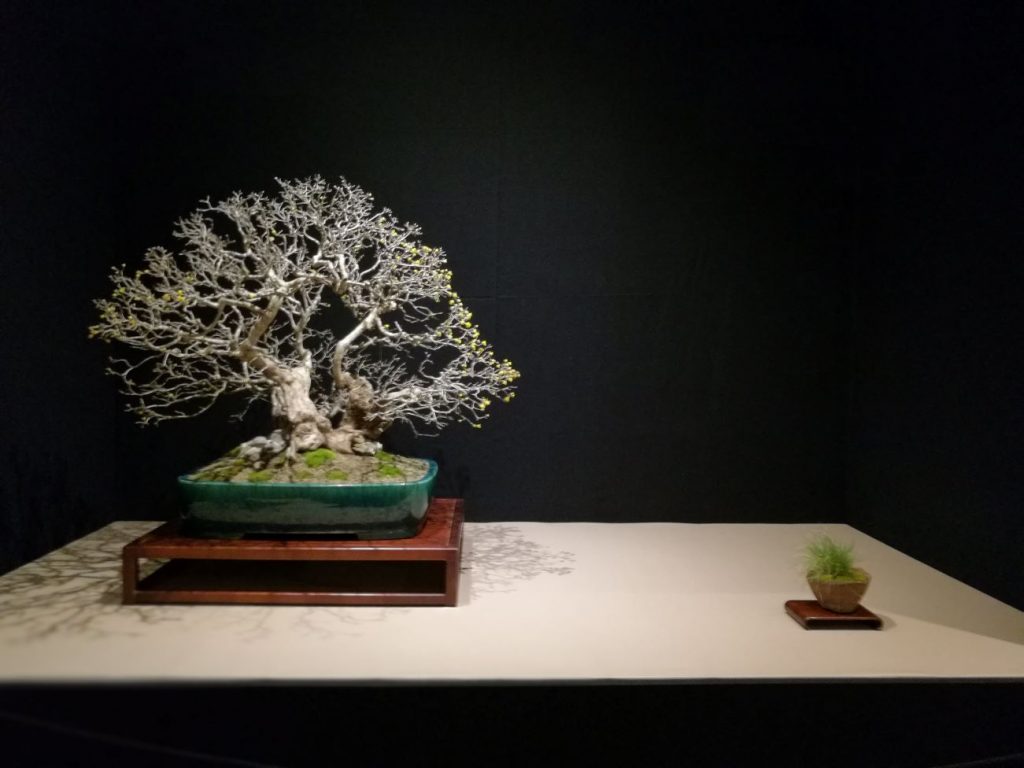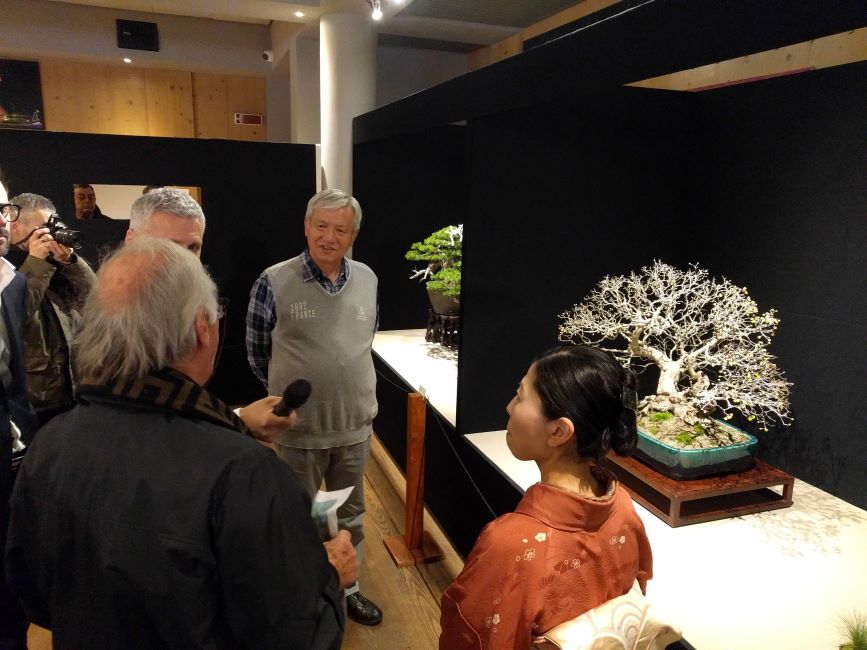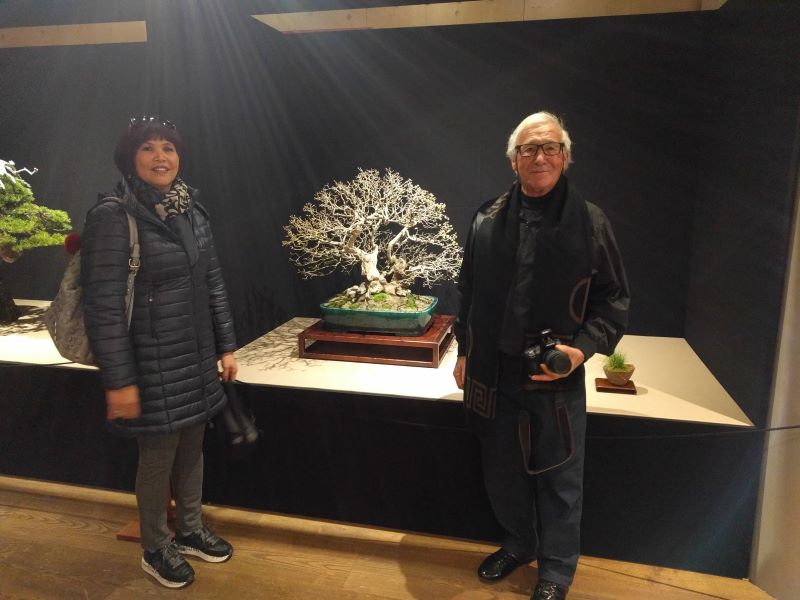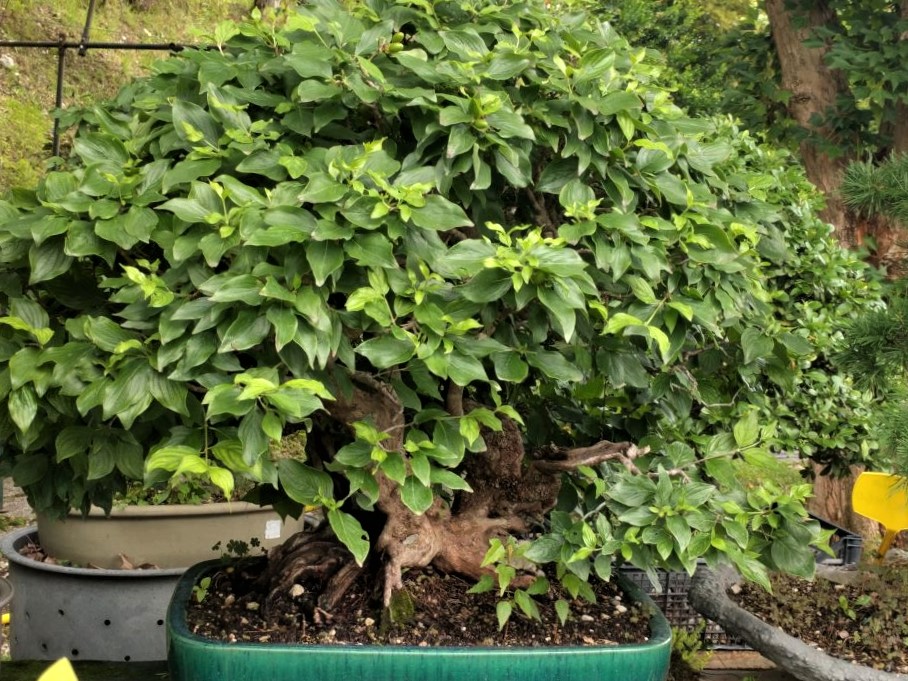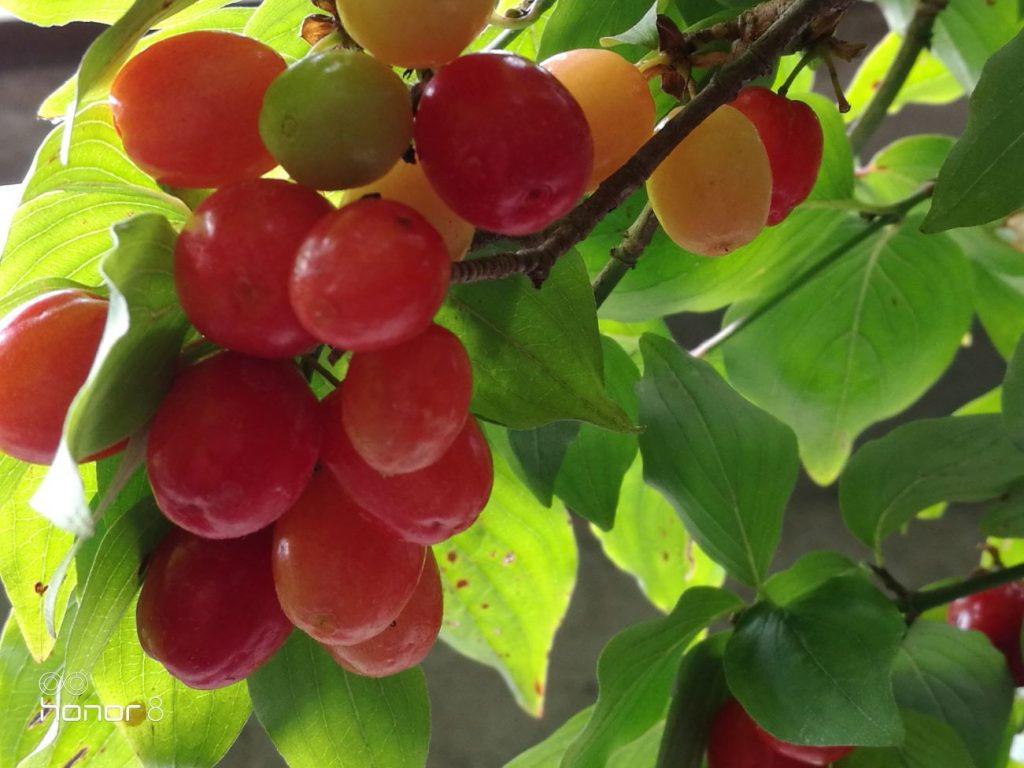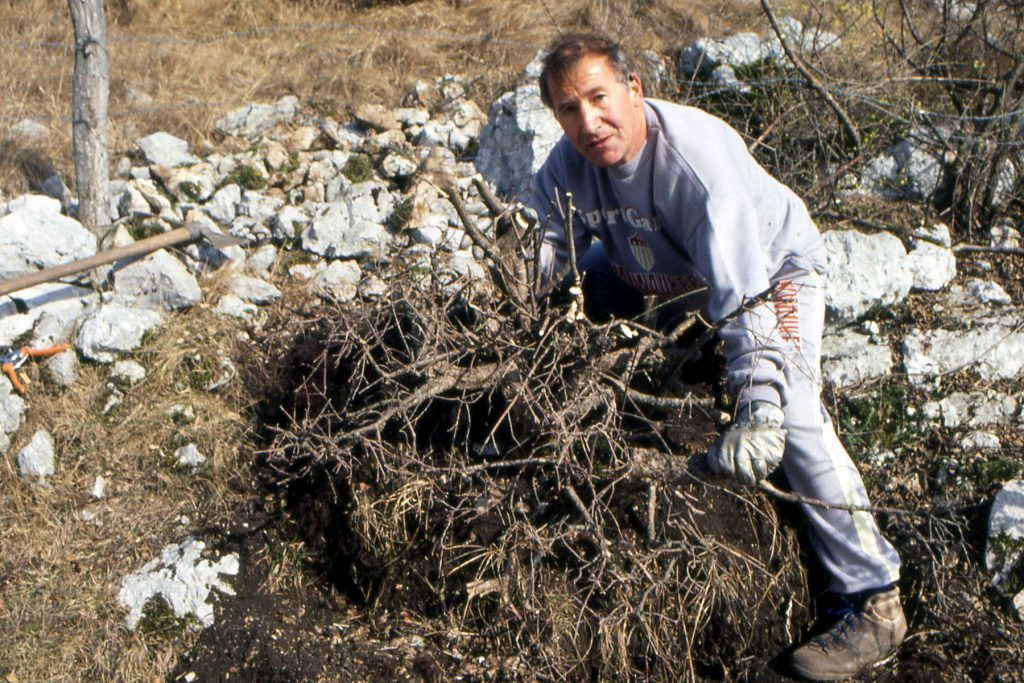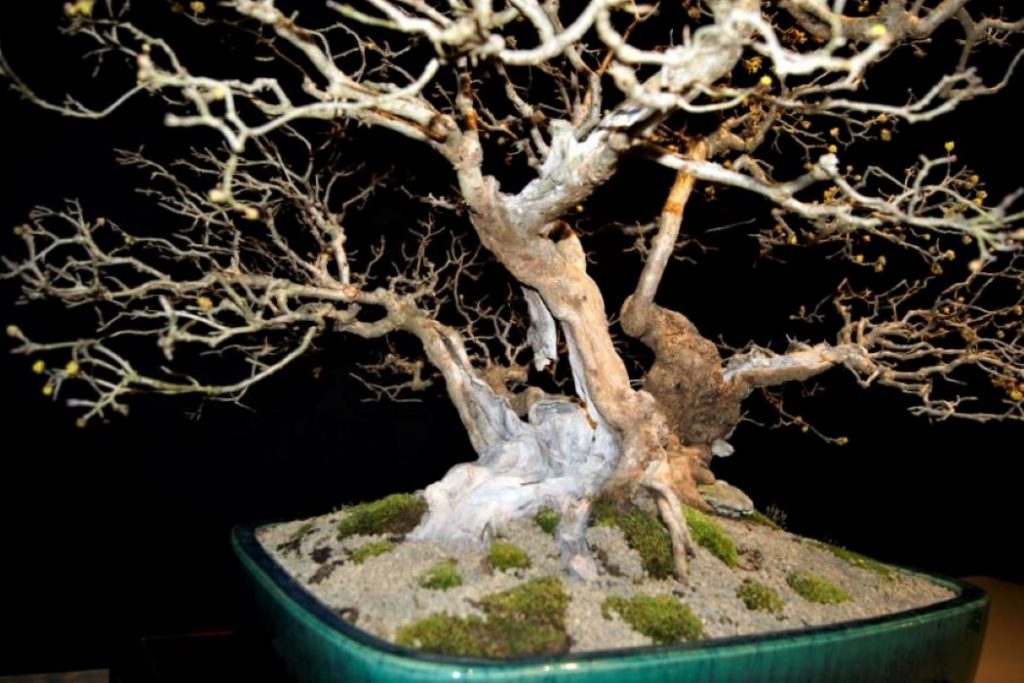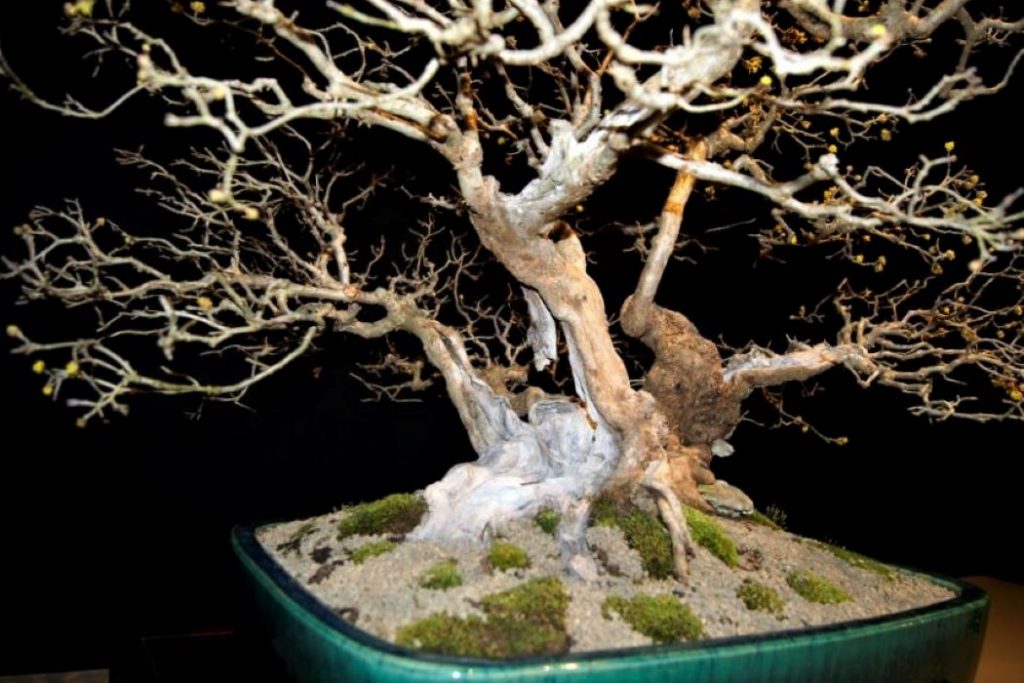
L’INCREDIBILE EVOLUZIONE DI UN CEPPO DI CORNIOLO, CONSIDERATO IL MIGLIORE BONSAI D’EUROPA.
CORNUS MAS (CORNIOLO) BREVE DESCRIZIONE E SCHEDA TECNICA
Testo e foto di Armando e Haina Dal Col
Il Corniolo è un alberello dal piacevole aspetto che può raggiungere i 4-7 m di altezza. Ha il pregio di fiorire prestissimo coprendo i rami ancora spogli con una miriade di fiorellini gialli, e grazie a questa sua caratteristica, è facilmente individuabile anche da lontano fra la macchia arbustiva, altrimenti più difficile da riconoscere per chi non ha una certa conoscenza delle piante. Colonizza i boschi di pianura e di collina dell’Italia centrale e settentrionale, privilegiando le zone calcaree dell’Europa centrale e sud-orientale. Prospera bene su terreni sciolti, argillosi e moderatamente umidi. Il legno del corniolo è molto duro, difficile da piegare.
Le foglie sono caduche, opposte a due a due ai nodi dei rami, di forma ellittico-ovale con apice molto acuminato, lunghe 5-7 cm con margine intero e superficie lievemente tomentosa.
I fiori, di colore giallo oro, hanno 4 petali e sono riuniti in corimbi semplici, cinti da 4 brattee molto più brevi e di colore giallo-verdognolo; sono opposti e inseriti lungo i rami, e compaiono molto precocemente prima dell’emissione delle foglie, già in febbraio-marzo.
Il frutto è una drupa ovale di colore rosso brillante, lunga fino a due cm, edule, astringente e leggermente acidula anche a maturità raggiunta, ma veramente buona quando cade naturalmente dai rami. Il frutto è provvisto di un lungo picciolo simile alle ciliegie.
Il Corniolo fa parte di quelle specie arboree a lento sviluppo, raggiungendo età plurisecolari. In esemplari annosi, il tronco appare nodoso e talvolta gibboso, con la corteccia che tendo a sfaldarsi, mettendo a nudo ampie chiazze. La difficoltà maggiore che incontra il corniolo, sta nello sviluppare un singolo tronco, robusto e con ramificazioni basse; infatti, predilige forme arbustive piuttosto disordinate.
Il suo legno è durissimo, e come dice un vecchio detto bellunese: “Te se duro come an Cornoler”, per indicare una persona dura di comprensione!
POTATURA DEI RAMI E DEI GERMOGLI.
La potatura dei rami di formazione alla struttura dell’albero, andrebbe eseguita subito dopo la fioritura, accorciando le branche in relazione al disegno programmato.
Potare i germogli che si sono allungati a fine maggio aumentando il numero dei rametti secondari e terziari, lasciando due-tre coppie di gemme in ognuno di loro. I rametti lasciati corti lignificheranno velocemente, e già in luglio-agosto inizieranno a formarsi le gemme da fiore. Se necessario, a fine settembre si procederà a un’ulteriore potatura dei germogli. Andranno eliminati, nel frattempo, i succhioni al loro apparire, poiché sottraggono molte energie alla pianta. I succhioni, infatti, si sviluppano vigorosi in verticale, e non portano gemme da fiore, per cui possono essere considerati dei parassiti vegetali. Naturalmente, se la base del tronco non è abbastanza robusta, e la prima parte del tronco è cilindrica o poco conica, si lasceranno crescere due tre succhioni che crescono alla base del tronco, ciò faciliterà un ingrossamento del tronco e, una volta raggiunta la conicità desiderata andranno eliminati.
Ed ora una sequenza di immagini di questo secolare corniolo, dopo essere stato espiantato dal luogo di crescita nel marzo del 1992, fino al suo massimo splendore visto nella primavera del 2018, per rivederlo nell’estate del 2020. Lo seguiremo negli anni nella sua lenta evoluzione, documentata dagli ennesimi rinvasi, fino all’ultimo rinvaso effettuato in febbraio del 2018, trasferendolo in un pregevole vaso artigianale smaltato giapponese, fatto da un Maestro di Tokoname, per presentarlo alla mostra internazionale Miyabi Ten, tenutasi a Castelbrando di Cison di Valmarino, in Italia.
Enjioy!
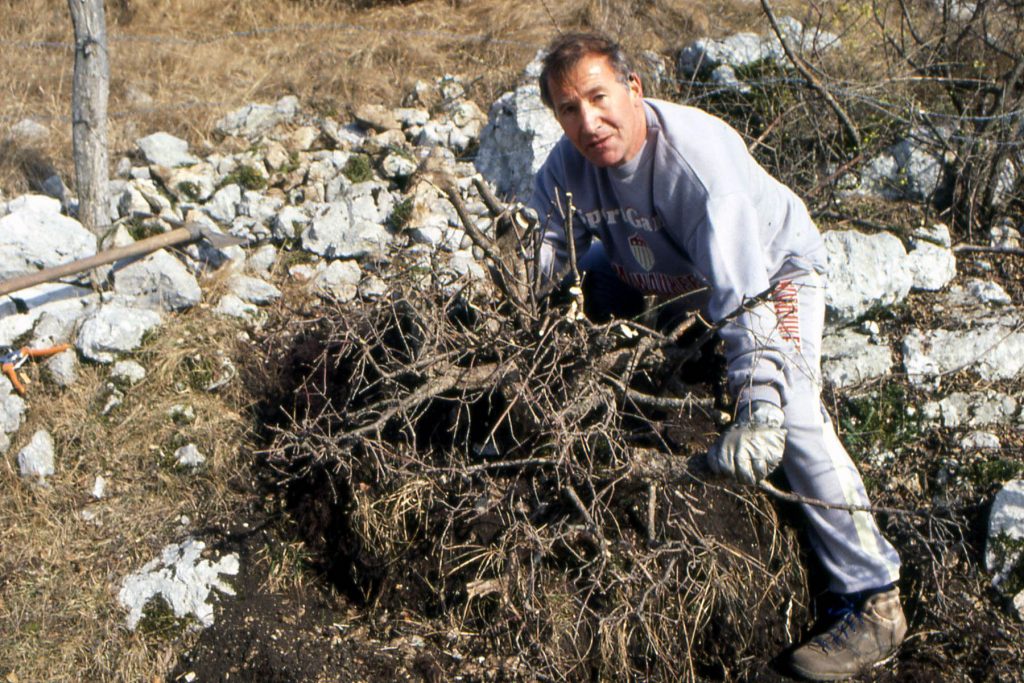
THE INCREDIBLE EVOLUTION OF A CORNEL STRAIN, CONSIDERED THE BEST BONSAI IN EUROPE.
THE INCREDIBLE EVOLUTION OF A CORNEL STRAIN, CONSIDERED THE BEST BONSAI IN EUROPE.
CORNUS MAS (CORNIOLO) SHORT DESCRIPTION AND TECHNICAL SHEET
Text and photos by Armando and Haina Dal Col
Corniolo is a pleasant-looking sapling that can reach 4-7 m in height. It has the advantage of blooming very early, covering the still bare branches with a myriad of yellow flowers, and thanks to this characteristic, it is easily identifiable even from a distance among the shrub scrub, otherwise more difficult to recognize for those who do not have a certain knowledge of plants. . It colonizes the plain and hill woods of central and northern Italy, favoring the limestone areas of central and south-eastern Europe. It thrives well on loose, clayey and moderately moist soils. Dogwood wood is very hard, difficult to bend.
The leaves are deciduous, opposite two by two at the nodes of the branches, elliptical-oval in shape with very sharp apex, 5-7 cm long with entire margin and slightly tomentose surface.
The golden yellow flowers have 4 petals and are gathered in simple corymbs, surrounded by 4 much shorter bracts and of a greenish-yellow color; they are opposite and inserted along the branches, and appear very early before the leaves are released, already in February-March.
The fruit is an oval drupe of bright red color, up to two cm long, edible, astringent and slightly acidic even when ripe, but really good when it falls naturally from the branches. The fruit has a long petiole similar to cherries.
Dogwood is one of those slow-growing tree species, reaching centuries-old age. In old specimens, the trunk appears gnarled and sometimes humped, with the bark that tends to flake off, exposing large patches. The greatest difficulty encountered by the dogwood lies in developing a single trunk, robust and with low branches; in fact, it prefers rather disordered shrub forms.
Its wood is very hard, and as an old Belluno saying goes: “Te se hard come an Cornoler”, to indicate a hard-to-understand person!
PRUNING OF BRANCHES AND BUDS.
The pruning of the branches forming the structure of the tree should be performed immediately after flowering, shortening the branches in relation to the planned design.
Prune the shoots that have elongated in late May by increasing the number of secondary and tertiary twigs, leaving two or three pairs of buds in each of them. The branches left short will lignify quickly, and already in July-August the flowering buds will begin to form. If necessary, further pruning of the shoots will be carried out at the end of September. In the meantime, the suckers will be eliminated when they appear, as they take away a lot of energy from the plant. The suckers, in fact, develop vigorous vertically, and do not carry flower buds, so they can be considered vegetable parasites. Naturally, if the base of the trunk is not strong enough, and the first part of the trunk is cylindrical or slightly conical, two three suckers will be allowed to grow at the base of the trunk, this will facilitate an enlargement of the trunk and, once the taper is reached. desired will be deleted.
And now a sequence of images of this centuries-old dogwood, after being explanted from the place of growth in March 1992, to its maximum splendor seen in the spring of 2018, to see it again in the summer of 2020. We will follow it over the years in its slow evolution, documented by the umpteenth repotting, up to the last repotting carried out in February 2018, transferring it to a fine Japanese enameled artisan vase, made by a Tokoname Master, to present it at the Miyabi Ten international exhibition, held in Castelbrando di Cison di Valmarino, in Italy.
Enjioy!
